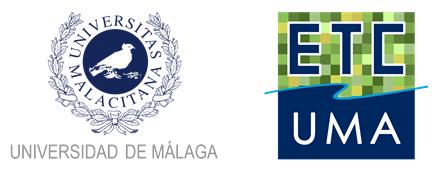Overview of recent work and access to online publications and resources
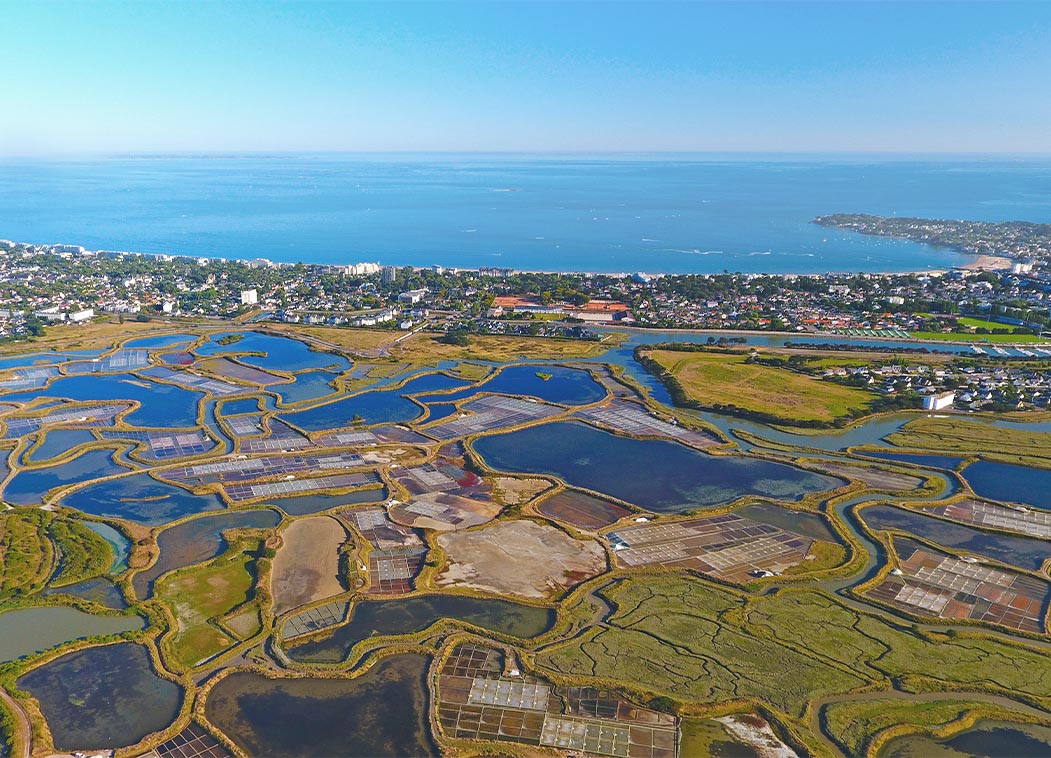
RESTORE4Cs 1st Policy Brief: How can coastal wetlands help achieve EU climate goals?
The first RESTORE4Cs Policy Brief of RESTORE4Cs, “How can coastal wetlands help achieve EU climate goals?“, highlights the importance of European coastal wetlands for reducing Greenhouse Gas emissions. The key messages of the first RESTORE4Cs Policy Brief include: Coastal wetlands are important natural carbon stores, ...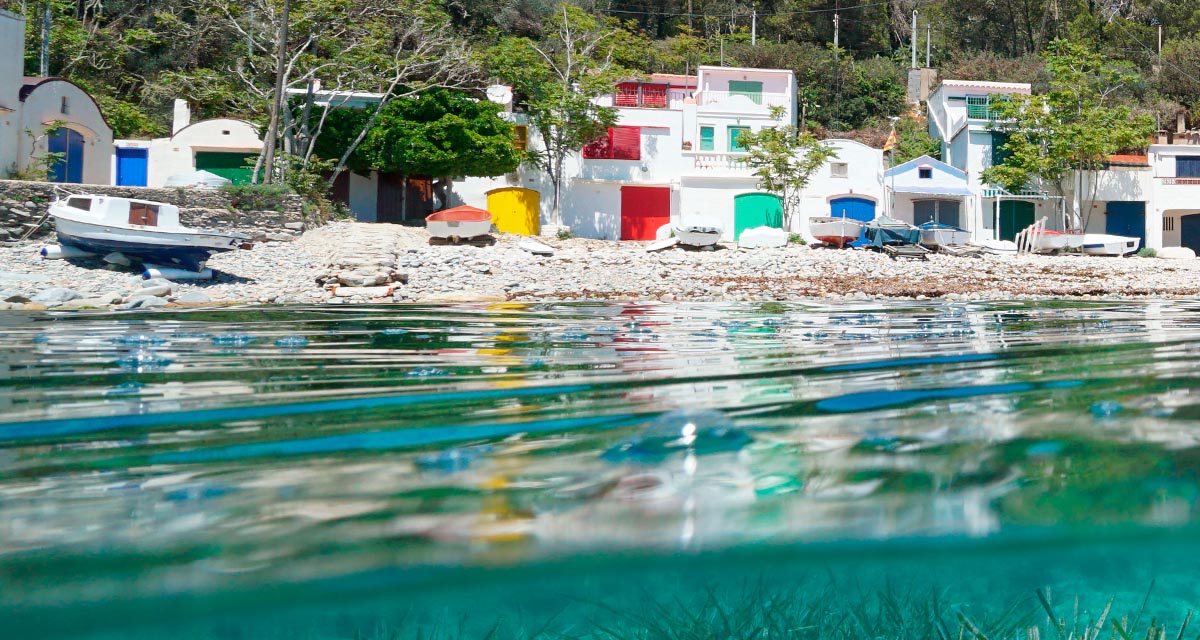
Mapping the Impact of Blue Tourism in the Mediterranean
The IUCN Centre for Mediterranean Cooperation with the support of ETC-UMA in the framework of the Blue Tourism Initiative, has released a comprehensive report entitled “Mapping the Impact of Blue Tourism in the Mediterranean: Vulnerability Assessment of Coastal and Marine ...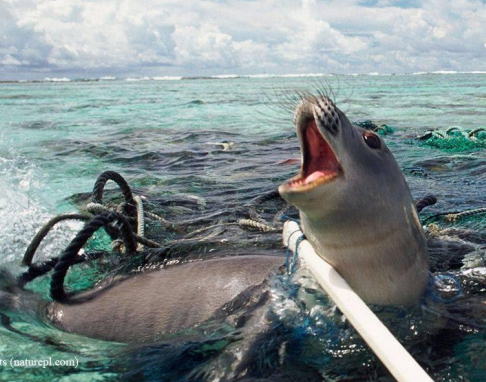
Brief update of the MedBioLitter database version 10 updated in January 2023
The MedBioLitter knowledge base is an entry-point to the peer reviewed research evidence published on the impacts of marine litter on marine biota in the Mediterranean region. This knowledge base was created in 2017, under the Interreg-Med funded initiative PANACeA ...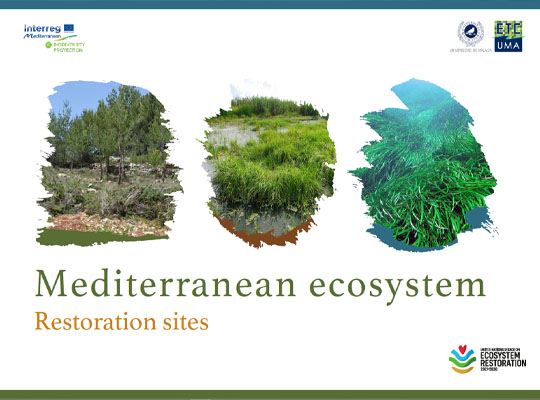
Mediterranean ecosystem restoration sites
In the frame of its strategic activities in the Mediterranean region, ETC-UMA as coordinator of the Mediterranean Biodiversity Protection Community (MBPC) has joined the Task Force on Best Practices on Ecosystem Restoration and committed to use its network of practitioners ...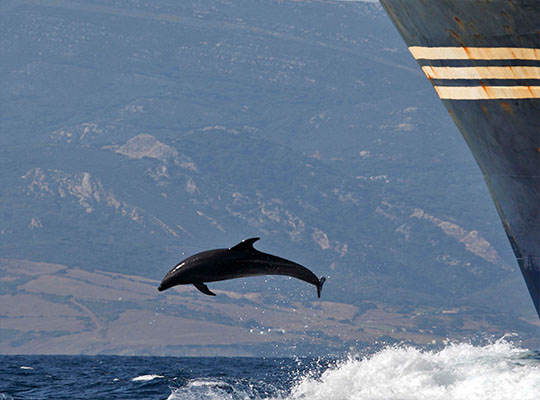
Supporting cetacean conservation in the Pelagos Sanctuary
A new report has been presented today, 18 November 2022, online in the frame of the cooperation between the Pelagos Permanent Secretariat and the Mediterranean Biodiversity Protection Community (MBPC), a project led by ETC-UMA. The new report, entitled Pathways to ...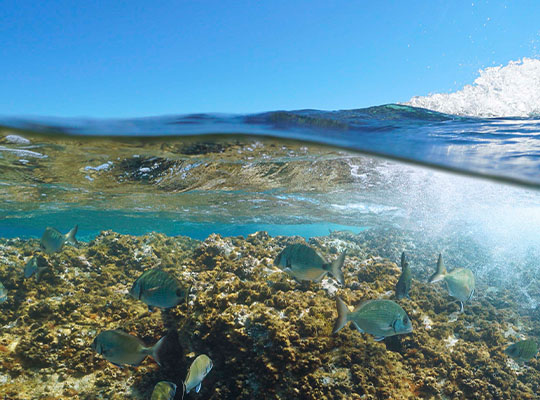
An assessment of marine biodiversity protection in the Mediterranean Sea: A threatened global biodiversity hotspot
The Mediterranean Sea is a World’s biodiversity hotspot. It harbours around 11% of all marine species in less than 1% of the global marine area (Bianchi & Morri, 2000). Furthermore, around 20% of those species are endemic (Coll et al., ...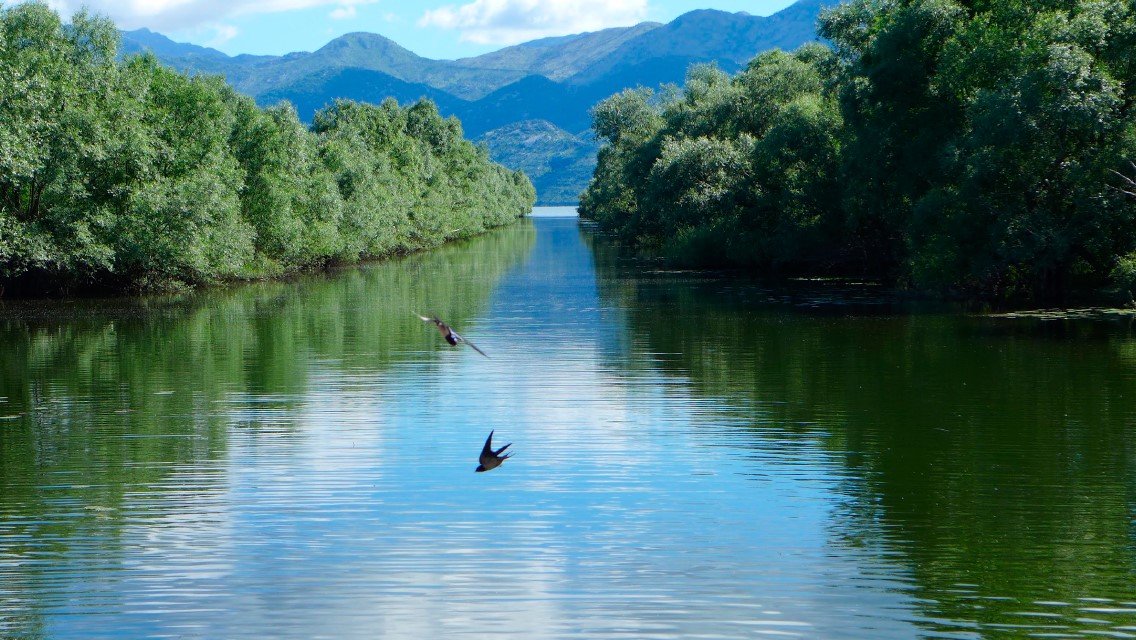
Mediterranean wetlands – their current state and ways to improve their conservation
The recent report entitled “Mapping and assessment of the state of wetland ecosystems: a Mediterranean perspective” led by ETC-UMA, in the frame of the Mediterranean Biodiversity Protection Community initiative co-funded by the EU Interreg Mediterranean programme, is the result of ...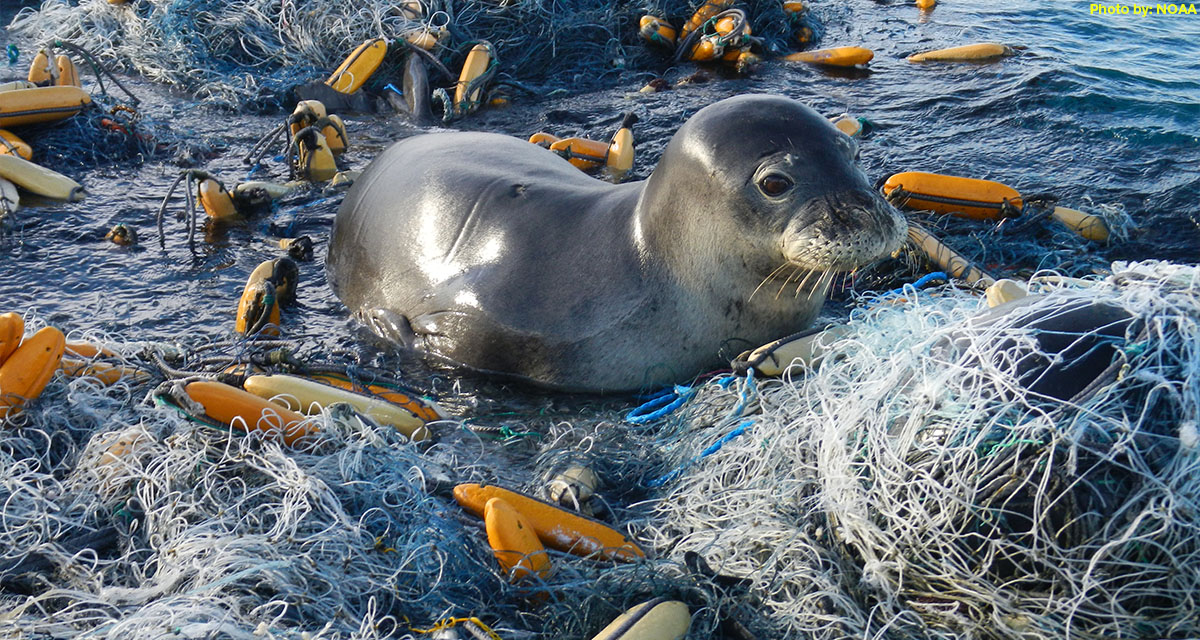
ETC-UMA issues new report on the impacts of litter on Mediterranean marine species
On the occasion of the workshop organized by IUCN and Région Sud in collaboration with its CPMR partner, the ETC-UMA Director, Dania Abdul Malak is presenting today 1 April 2022 a highlight on the wide range of actions required to ...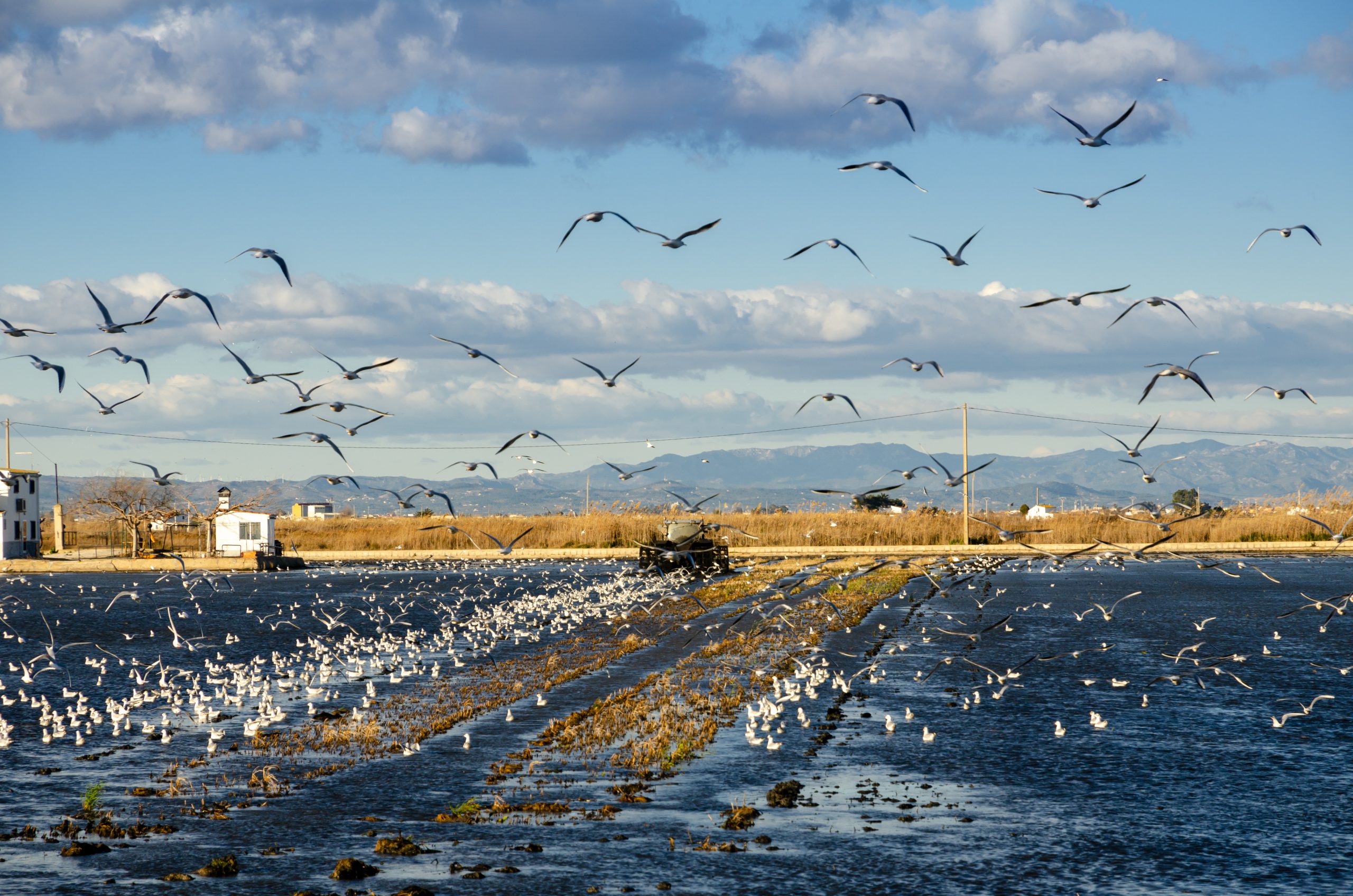
The role of healthy wetlands in fighting climate change
The new report developed by the ETC-UMA (University of Malaga), as partner of the European Topic Centre on Urban, Land and Soil Systems (ETC/ULS) has shed light on the role of healthy wetland habitats in the carbon cycle and the ...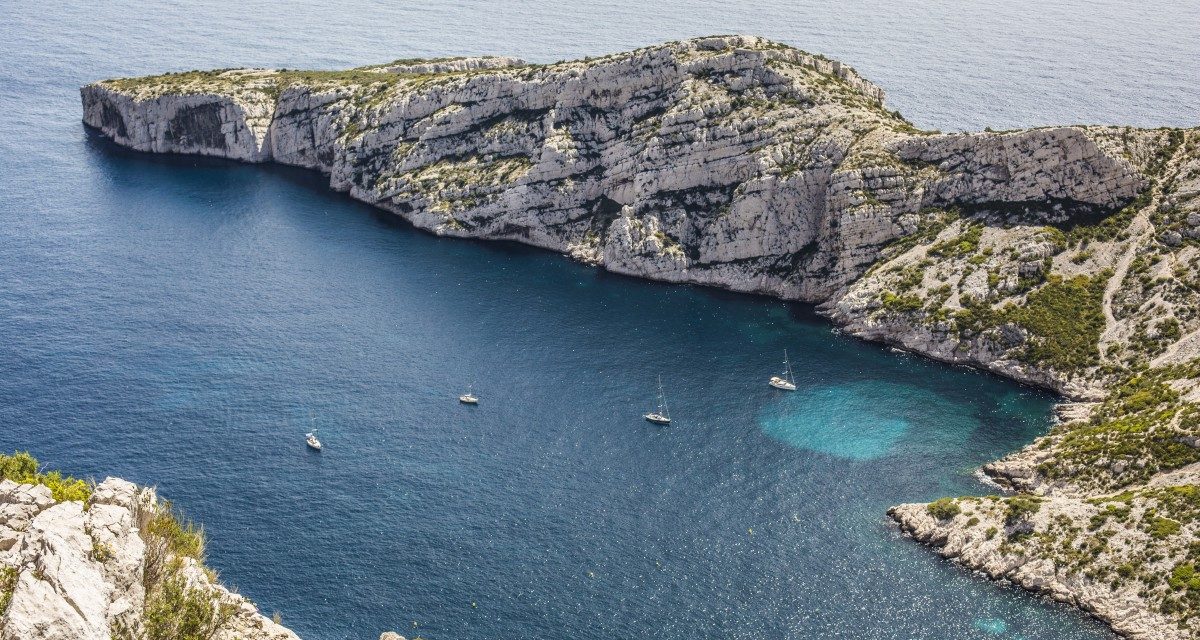
A Mediterranean snapshot on what we have and how to protect it
The report on the State of the Environment and Development in the Mediterranean (SoED) published in November 2020 warns that the Mediterranean basin is facing escalating environmental and developmental challenges: warming 20% faster than other regions, with 78% of fishing stocks subject ...
Mapping and Assessment of Ecosystems and their Services: An EU ecosystem assessment
This report presents an ecosystem assessment covering the total land area of the EU as well as the EU marine regions. The assessment is carried out by Joint Research Centre, European Environment Agency, DG Environment, and the European Topic Centres ...
MedBioLitter: an open database on marine litter and biodiversity science
An open database and spatial geoportal on current scientific knowledge related to marine litter and biodiversity interactions in the Mediterranean region. ...Check all our resources
You can access additional resources and publications per year through our engine below
Journal Articles
Mackelworth, P.; Fortuna, C. M.; Antoninić, M.; Holcer, D.; Abdul-Malak, D.; Attia, K.; Bricelj, M.; Guerquin, F.; Marković, M.; Nunes, E.; Perez-Valverde, C.; Ramieri, E.; Stojanović, I.; Tunesi, L.; McGowan, J.
Ecologically and Biologically Significant Areas (EBSAs) as an enabling mechanism for transboundary marine spatial planning Journal Article
In: Marine Policy, vol. 166, pp. 106231, 2024, ISSN: 0308-597X.
Abstract | Links | BibTeX | Tags: Biodiversity, Conservation and management, Environmental conservation, Mediterranean sea, Protected areas, Transboundary management
@article{MACKELWORTH2024106231,
title = {Ecologically and Biologically Significant Areas (EBSAs) as an enabling mechanism for transboundary marine spatial planning},
author = {P. Mackelworth and C. M. Fortuna and M. Antoninić and D. Holcer and D. Abdul-Malak and K. Attia and M. Bricelj and F. Guerquin and M. Marković and E. Nunes and C. Perez-Valverde and E. Ramieri and I. Stojanović and L. Tunesi and J. McGowan},
url = {https://www.sciencedirect.com/science/article/pii/S0308597X2400229X},
doi = {https://doi.org/10.1016/j.marpol.2024.106231},
issn = {0308-597X},
year = {2024},
date = {2024-01-01},
urldate = {2024-01-01},
journal = {Marine Policy},
volume = {166},
pages = {106231},
abstract = {As the new global biodiversity targets kick in, the signatories to the Convention of Biological Diversity (CBD) are searching for means to fulfil their obligations. Fortunately, more than a decade ago a long-neglected solution was created for the marine environment. The ecologically or biologically significant marine areas (EBSAs) provide a means for opening discussions around the management of large marine areas, ideally with conservation as a core priority. While the biological and ecological criteria for the selection of the EBSAs is clearly outlined, there is little clarity on the means to manage or govern these areas. The conservation and management measures are left as a matter to be resolved by those states which maintain some form of jurisdiction over regions within an EBSA. Of course, these measures must be in accordance with international law. Within the Mediterranean there are 15 EBSAs which have been identified and recognised by the parties of the UNEP regional seas programme. For the past four years, technical and scientific discussions have looked to move the EBSA recognition of the Southern Adriatic Ionian Straight (SAIS) forward and identify potential governance frameworks. This work has included a biodiversity threat analysis, a legal and governance review, and a preliminary spatial prioritization. We report on the processes undertaken, the policy implications for the SAIS-EBSA and the way forward. This work has implications not only for this region but for other regions within the Mediterranean and beyond.},
keywords = {Biodiversity, Conservation and management, Environmental conservation, Mediterranean sea, Protected areas, Transboundary management},
pubstate = {published},
tppubtype = {article}
}
Rodríguez-Rodríguez, D.; Knecht, N.; Llopis, J. C.; Heriarivo, R. A.; Rakotoarison, H.; Andriamampionomanjaka, V.; Navarro-Jurado, E.; Randriamamonjy, V.
Socioeconomic impacts of small conserved sites on rural communities in Madagascar Journal Article
In: Environmental Development, pp. 100965, 2024, ISSN: 2211-4645.
Abstract | Links | BibTeX | Tags: Biodiversity, Conservation and management, Ecosystem services, Environmental conservation
@article{RODRIGUEZRODRIGUEZ2024100965,
title = {Socioeconomic impacts of small conserved sites on rural communities in Madagascar},
author = {D. Rodríguez-Rodríguez and N. Knecht and J. C. Llopis and R. A. Heriarivo and H. Rakotoarison and V. Andriamampionomanjaka and E. Navarro-Jurado and V. Randriamamonjy},
url = {https://www.sciencedirect.com/science/article/pii/S2211464524000034},
doi = {https://doi.org/10.1016/j.envdev.2024.100965},
issn = {2211-4645},
year = {2024},
date = {2024-01-01},
urldate = {2024-01-01},
journal = {Environmental Development},
pages = {100965},
abstract = {Madagascar is considered one of the top global biodiversity hotspots while at the same time is among the world's least developed countries. Pressing socioeconomic needs such as food provision often lead to unsustainable land use and widespread loss, fragmentation and degradation of natural habitats. Thus, ascertaining the socioeconomic effects of small conserved sites is urgent in order to show their benefits and identify their costs to attain sustainable rural development on the island. Here, we used structured questionnaires in two surveys to key local stakeholders, including 1) managers of three conserved sites smaller than 100 ha, and 2) local communities living around such sites (cases) and similar neighbouring communities unaffected by those conserved sites (controls), following a Before-After-Control-Impact design. Median income did not differ between case and control communities, although case communities reported better self-perception of their economic situation and wider availability of basic services. Substantial revenues from tourism accrued only to one local community from a conveniently located, community-managed site: Anja Community Reserve. No differences in the economic effects from the establishment of the conserved sites were found between sex, age or education levels of community members. Exploitation of natural resources from conserved sites was either prohibited (two sites) or severely restricted (one site). As a result, case communities tended to collect fewer natural resources from nearby areas than control communities. Contrary to expectations, case communities reported less economic impact than control communities during the COVID-19 pandemic even though visitors were reduced to zero, which likely indicate greater socioeconomic resilience due to previous community investments and greater availability of ecosystem services. Successful, bottom-up and replicable approaches to locally manage natural resources sustainably are urgently needed in a country with rich and vanishing biodiversity, weak institutions, high poverty rates and strong dependence on natural resources for subsistence.},
keywords = {Biodiversity, Conservation and management, Ecosystem services, Environmental conservation},
pubstate = {published},
tppubtype = {article}
}
Zhang, Yin; West, Paige; Thakholi, Lerato; Suryawanshi, Kulbhushansingh; Supuma, Miriam; Straub, Dakota; Sithole, Samantha S.; Sharma, Roshan; Schleicher, Judith; Ruli, Ben; Rodríguez-Rodríguez, D.; Rasmussen, Mattias Borg; Ramenzoni, Victoria C.; Qin, Siyu; Pugley, Deborah Delgado; Palfrey, Rachel; Oldekop, Johan; Nuesiri, Emmanuel O.; Nguyen, Van Hai Thi; Ndam, Nouhou; Mungai, Catherine; Milne, Sarah; Mabele, Mathew Bukhi; Lucitante, Sadie; Lucitante, Hugo; Liljeblad, Jonathan; Kiwango, Wilhelm Andrew; Kik, Alfred; Jones, Nikoleta; Johnson, Melissa; Jarrett, Christopher; James, Rachel Sapery; Holmes, George; Gibson, Lydia N.; Ghoddousi, Arash; Geldmann, Jonas; Gebara, Maria Fernanda; Edwards, Thera; Dressler, Wolfram H.; Douglas, Leo R.; Dimitrakopoulos, Panayiotis G.; Davidov, Veronica; Compaoré-Sawadogo, Eveline M. F. W.; Collins, Yolanda Ariadne; Cepek, Michael; Burow, Paul Berne; Brockington, Dan; Balinga, Michael Philippe Bessike; Austin, Beau J.; Astuti, Rini; Ampumuza, Christine; Agyei, Frank Kwaku
Governance and Conservation Effectiveness in Protected Areas and Indigenous and Locally Managed Areas Journal Article
In: Annual Review of Environment and Resources, vol. 48, no. 1, pp. 559-588, 2023.
Abstract | Links | BibTeX | Tags: Biodiversity, Conservation and management, Environmental conservation, Marine protected areas, Protected areas
@article{doi:10.1146/annurev-environ-112321-081348,
title = {Governance and Conservation Effectiveness in Protected Areas and Indigenous and Locally Managed Areas},
author = {Yin Zhang and Paige West and Lerato Thakholi and Kulbhushansingh Suryawanshi and Miriam Supuma and Dakota Straub and Samantha S. Sithole and Roshan Sharma and Judith Schleicher and Ben Ruli and D. Rodríguez-Rodríguez and Mattias Borg Rasmussen and Victoria C. Ramenzoni and Siyu Qin and Deborah Delgado Pugley and Rachel Palfrey and Johan Oldekop and Emmanuel O. Nuesiri and Van Hai Thi Nguyen and Nouhou Ndam and Catherine Mungai and Sarah Milne and Mathew Bukhi Mabele and Sadie Lucitante and Hugo Lucitante and Jonathan Liljeblad and Wilhelm Andrew Kiwango and Alfred Kik and Nikoleta Jones and Melissa Johnson and Christopher Jarrett and Rachel Sapery James and George Holmes and Lydia N. Gibson and Arash Ghoddousi and Jonas Geldmann and Maria Fernanda Gebara and Thera Edwards and Wolfram H. Dressler and Leo R. Douglas and Panayiotis G. Dimitrakopoulos and Veronica Davidov and Eveline M. F. W. Compaoré-Sawadogo and Yolanda Ariadne Collins and Michael Cepek and Paul Berne Burow and Dan Brockington and Michael Philippe Bessike Balinga and Beau J. Austin and Rini Astuti and Christine Ampumuza and Frank Kwaku Agyei},
url = {https://doi.org/10.1146/annurev-environ-112321-081348},
doi = {10.1146/annurev-environ-112321-081348},
year = {2023},
date = {2023-01-01},
urldate = {2023-01-01},
journal = {Annual Review of Environment and Resources},
volume = {48},
number = {1},
pages = {559-588},
abstract = {Increased conservation action to protect more habitat and species is fueling a vigorous debate about the relative effectiveness of different sorts of protected areas. Here we review the literature that compares the effectiveness of protected areas managed by states and areas managed by Indigenous peoples and/or local communities. We argue that these can be hard comparisons to make. Robust comparative case studies are rare, and the epistemic communities producing them are fractured by language, discipline, and geography. Furthermore the distinction between these different forms of protection on the ground can be blurred. We also have to be careful about the value of this sort of comparison as the consequences of different forms of conservation for people and nonhuman nature are messy and diverse. Measures of effectiveness, moreover, focus on specific dimensions of conservation performance, which can omit other important dimensions. With these caveats, we report on findings observed by multiple study groups focusing on different regions and issues whose reports have been compiled into this article. There is a tendency in the data for community-based or co-managed governance arrangements to produce beneficial outcomes for people and nature. These arrangements are often accompanied by struggles between rural groups and powerful states. Findings are highly context specific and global generalizations have limited value.},
keywords = {Biodiversity, Conservation and management, Environmental conservation, Marine protected areas, Protected areas},
pubstate = {published},
tppubtype = {article}
}
García-Millán, V. E.; Rodríguez-Rodríguez, D.; Oncina, A. Martín; Andrianarimisa, A.; Randriamiharisoa, L. O.; Martorell-Guerrero, G.; Bóveda, A.; Abdul-Malak, D.
Identification of Priority Forest Conservation Areas for Critically Endangered Lemur Species of Madagascar Journal Article
In: Land, vol. 11, iss. 9, no. 1455, 2022.
Abstract | Links | BibTeX | Tags: Biodiversity, Conservation and management, Environmental conservation, Forest, Geotechnology, Protected areas
@article{García-Millán2022,
title = {Identification of Priority Forest Conservation Areas for Critically Endangered Lemur Species of Madagascar},
author = {V. E. García-Millán and D. Rodríguez-Rodríguez and A. Martín Oncina and A. Andrianarimisa and L. O. Randriamiharisoa and G. Martorell-Guerrero and A. Bóveda and D. Abdul-Malak},
url = {https://doi.org/10.3390/land11091455},
doi = {https://doi.org/10.3390/land11091455},
year = {2022},
date = {2022-09-01},
urldate = {2022-09-01},
journal = {Land},
volume = {11},
number = {1455},
issue = {9},
abstract = {Forests have extraordinary importance for the conservation of endemic species in Madagascar. However, they are disappearing fast due to a number of pressures, notably unsustainable agricultural practices leading to aggravated status of biodiversity. Here, we used a number of ecological and spatial criteria to identify and prioritise unprotected forest areas for the conservation of the eight critically endangered species of lemur belonging to the Lemuridae family in Madagascar. By combining spatial information layers on the distribution areas of the studied lemurs, forest extension and conservation status, and potential human impacts (such as roads, human settlements and agriculture lands), it was possible to identify the most appropriate sites for the expansion of the conservation areas of critically endangered lemur species. Seven new sites, totalling over 33,000 ha, were identified as priority sites for the protection of those species. All of them were adjacent to or inside (just one site) existing protected areas (PAs), which likely makes their protection both feasible and socioeconomically efficient by enlarging those PAs. Legally protecting these sites would not only take Madagascar one little step ahead for meeting oncoming global biodiversity targets for 2030 but could also make a substantial contribution to the mid-term survival of the studied lemur species.},
keywords = {Biodiversity, Conservation and management, Environmental conservation, Forest, Geotechnology, Protected areas},
pubstate = {published},
tppubtype = {article}
}
Marín, A. I.; Abdul-Malak, D.; Bastrup-Birk, A.; Chirici, G.; Barbati, A.; Kleeschulte, S.
Mapping forest condition in Europe: Methodological developments in support to forest biodiversity assessments Journal Article
In: Ecological Indicators, vol. 128, 2021.
Abstract | Links | BibTeX | Tags: Biodiversity, Conservation and management, Ecosystem, Environmental conservation, Forest
@article{Marín2021b,
title = {Mapping forest condition in Europe: Methodological developments in support to forest biodiversity assessments},
author = {A. I. Marín and D. Abdul-Malak and A. Bastrup-Birk and G. Chirici and A. Barbati and S. Kleeschulte},
url = {https://doi.org/10.1016/j.ecolind.2021.107839},
doi = {10.1016/j.ecolind.2021.107839},
year = {2021},
date = {2021-05-29},
journal = {Ecological Indicators},
volume = {128},
abstract = {Forest condition, biodiversity, and ecosystem services are strongly interlinked. The biodiversity levels depend to a large extent on the integrity, health, and vitality of forests at the same time as losses of forest biodiversity lead to decreased forest productivity and sustainability. Under this conceptual framework, this study presents a methodology for mapping forest condition at European scale supporting the attainment of the 2020 Aichi Biodiversity Target 5 “the rate of loss of all natural habitats, including forests, is at least halved and where feasible brought close to zero, and degradation and fragmentation is significantly reduced” and the implementation of Sustainable Development Goals (SDG), as well as the EU forest strategy since the sustainable forest management is oriented to support the provision of forest services and to enhance the condition of biodiversity forests’ host.
The work presents the developments of an operational indicator at European scale. This spatially explicit information on forest condition can be the baseline map with a 1 km resolution to monitor the state and changes of condition by exposition to pressures and threats. This condition indicator considers structural, functional, and compositional aspects of forest with relevance for health and vitality of species and habitats hosted by forest ecosystems.
The methodology implemented used harmonized, published and open datasets. It provided confident results for the assessment of the condition within hemiboreal, temperate and alpine forests, showing the Carpathian, Dinaric Alps and Alps, among others, as hotspots with pre-dominantly good condition. The results were validated with data derived from the reporting for the EU Habitat Directive and explicit dataset on known primary forests in Europe. However, this method underestimated the forest condition in the Mediterranean and Boreal forest types due to data gaps, regional specific characteristics, and design limitations.
This study illustrates an operational and transferable approach for addressing the assessment of ecosystem forest condition at European scale being considered as a support tool for European countries when mapping and assessing their national territory, as potential common approach to map forest ecosystems that allows for consistent aggregation and comparisons across scales.},
keywords = {Biodiversity, Conservation and management, Ecosystem, Environmental conservation, Forest},
pubstate = {published},
tppubtype = {article}
}
The work presents the developments of an operational indicator at European scale. This spatially explicit information on forest condition can be the baseline map with a 1 km resolution to monitor the state and changes of condition by exposition to pressures and threats. This condition indicator considers structural, functional, and compositional aspects of forest with relevance for health and vitality of species and habitats hosted by forest ecosystems.
The methodology implemented used harmonized, published and open datasets. It provided confident results for the assessment of the condition within hemiboreal, temperate and alpine forests, showing the Carpathian, Dinaric Alps and Alps, among others, as hotspots with pre-dominantly good condition. The results were validated with data derived from the reporting for the EU Habitat Directive and explicit dataset on known primary forests in Europe. However, this method underestimated the forest condition in the Mediterranean and Boreal forest types due to data gaps, regional specific characteristics, and design limitations.
This study illustrates an operational and transferable approach for addressing the assessment of ecosystem forest condition at European scale being considered as a support tool for European countries when mapping and assessing their national territory, as potential common approach to map forest ecosystems that allows for consistent aggregation and comparisons across scales.
Rodríguez-Rodríguez, D.; Sánchez-Espinosa, A.; Abdul-Malak, D.
Potential contribution of OECMs to international area-based conservation targets in a biodiversity rich country, Spain Journal Article
In: Journal for Nature Conservation, vol. 62, 2021.
Abstract | Links | BibTeX | Tags: Biodiversity, Conservation and management, Ecosystem, Environmental conservation, Marine protected areas, Protected areas
@article{Rodríguez-Rodríguez2021b,
title = {Potential contribution of OECMs to international area-based conservation targets in a biodiversity rich country, Spain},
author = {D. Rodríguez-Rodríguez and A. Sánchez-Espinosa and D. Abdul-Malak},
url = {https://doi.org/10.1016/j.jnc.2021.126019},
doi = {10.1016/j.jnc.2021.126019},
year = {2021},
date = {2021-05-15},
journal = {Journal for Nature Conservation},
volume = {62},
abstract = {Other effective area-based conservation measures (OECMs) are new conservation tools intended to complement protected areas (PAs) at achieving effective biodiversity conservation and meeting international area-based targets. However, OECMs have been rarely considered in practical terms until recently. Here, we performed a rapid evaluation on the degree of fulfilment of current area-based international biodiversity targets, post-2020 foreseeable oncoming targets, and ecological targets by considering: 1) Protection coverage; 2) Inclusiveness of important areas for biodiversity; 3) Protection management; 4) Connectivity; and 5) Habitat representation, on land and at sea in Spain, a Euro-Mediterranean, biodiversity rich country. We conducted the evaluation under two scenarios: 1) Scenario 1 considers designated PAs; and 2) Scenario 2, that also includes potential OECMs. In order to generate Scenario 2, thirteen legal categories were assessed against international guidance on OECMs as a first step to screen their likelihood of providing OECMs in Spain. Our findings show that some potentially satisfactory OECM categories such as Public Utility Forests, River Reserves or Geoparks meet the OECM criteria to a large degree and deserve further study. Our results also highlight that Spain is currently well above most foreseeable post-2020 biodiversity targets and even close to some ecological targets using just PAs, except for marine protected area (MPA) management and MPA offshore coverage. Adding OECMs would noticeably improve the country’s figures yet without reaching many exigent ecological targets. OECMs can become a useful, cost-effective biodiversity conservation tool that contributes to international targets under new, more ambitious area-based conservation requirements in Spain and elsewhere. Nevertheless, for this to happen, suitable biodiversity management and monitoring schemes must be ensured.},
keywords = {Biodiversity, Conservation and management, Ecosystem, Environmental conservation, Marine protected areas, Protected areas},
pubstate = {published},
tppubtype = {article}
}
Hatziiordanou, L.; Fitoka, E.; Hadjicharalampous, E.; Votsi, N. E.; Palaskas, D.; Abdul-Malak, D.
In: One Ecosystem, vol. 4, no. e32704, 2019.
Abstract | Links | BibTeX | Tags: Biodiversity, Climate Change, Conservation and management, Ecosystem services, Forest, Land and soil, Pressures, Wetlands
@article{Hatziiordanou2019,
title = {Indicators for mapping and assessment of ecosystem condition and of the ecosystem service habitat maintenance in support of the EU Biodiversity Strategy to 2020},
author = {L. Hatziiordanou and E. Fitoka and E. Hadjicharalampous and N.E. Votsi and D. Palaskas and D. Abdul-Malak},
url = {https://oneecosystem.pensoft.net/article/32704/},
doi = {10.3897/oneeco.4.e32704},
year = {2019},
date = {2019-06-13},
journal = {One Ecosystem},
volume = {4},
number = {e32704},
abstract = {A systematic approach to map and assess the “maintenance of nursery populations and habitats” ecosystem service (ES) (hereinafter called “habitat maintenance”) has not yet emerged. In this article, we present an ecosystem service framework implementation at landscape level, by proposing an approach for calculating and combining a series of indicators with spatial modelling techniques. Necessary conceptual elements for this approach are: a) ecosystem condition, b) supply and demand of the targeted ecosystem service and c) spatial relationships between the Service Providing Units (SPU) and the Service Connecting Units (SCU). Ecosystem condition is quantified and mapped based on two indicators, the Biodiversity State and the Anthropogenic Impact. Quantification and mapping of supply and demand are based on the hypothesis that high supply can be activated in strictly protected areas and that a demand is localised in the Natura 2000 sites (N2K), considering them as the Service Benefit Areas (SBA). Wetlands are assessed as SCU between the SBA and the landscape areas where the habitat maintenance ES is supplied. By assessing wetlands as SCU, we intent to highlight their role as biodiversity stepping stones and as green infrastructures. Overall, we conclude that the EU biodiversity policy demand for no net loss and for a coherent N2K network can be met by enhancing the delivery of the habitat maintenance ES. This approach can assist policy-makers in prioritisation of conservation and restoration targets, in line with the EU biodiversity strategy to 2020 and the preparation of the post-2020 Strategy.},
keywords = {Biodiversity, Climate Change, Conservation and management, Ecosystem services, Forest, Land and soil, Pressures, Wetlands},
pubstate = {published},
tppubtype = {article}
}
Rodríguez-Rodríguez, D.; Martínez-Vega, J.
Representation and protection of the threatened biodiversity by the largest Spanish regional network of protected areas Journal Article
In: Endangered Species Research, vol. 35, pp. 125-139, 2018.
Abstract | Links | BibTeX | Tags: Biodiversity, Conservation and management, Ecosystem services, Pressures, Protected areas, SOSTPARK
@article{Rodríguez-Rodríguez2018e,
title = {Representation and protection of the threatened biodiversity by the largest Spanish regional network of protected areas},
author = {D. Rodríguez-Rodríguez and J. Martínez-Vega},
url = {https://doi.org/10.3354/esr00878},
doi = {10.3354/esr00878},
year = {2018},
date = {2018-03-15},
journal = {Endangered Species Research},
volume = {35},
pages = {125-139},
abstract = {The main global strategy to stop biodiversity loss is the designation of protected areas (PAs). Spain is a highly biodiverse country. It has one of the world's greatest terrestrial PA coverages. However, the status of its biodiversity is delicate as a result of serious pressures, and some important areas for biodiversity are outside PAs. We used official census data to spatially assess how 71 habitats of community interest (HCIs), 126 regionally threatened flora, fauna and fungi species and subspecies (RTSs), and 33 globally threatened species or subspecies (GTSs) are represented in a network of 404 PAs in Andalusia, a region rich in biodiversity in southern Spain. We also assessed the legal and managerial protection afforded to these threatened habitats and species by those PAs. The Andalusian PA network expands across one-third of the region’s territory and includes the threatened species’ richest areas. However, it only covers 57% of the area of occupancy of RTSs, 81% of the regional area of occupancy of GTSs, and 53% of the extent of HCIs. Over 61% of the regional PA network area is assigned more than 1 PA designation category, although cumulative legal protection is marginally related to RTS richness and unrelated to GTS richness. RTSs and especially GTSs occupy the most relative area in Ramsar sites (i.e. wetlands of international importance), although these are of relatively minor importance for threatened habitats. Wetlands and agricultural areas are the broad ecosystem types showing the greatest numbers of RTSs and GTSs. Seven GTSs were not included in the Andalusian Register of Threatened Species. One hundred and eleven unprotected Areas of High Importance for Threatened Species (AHITSs) and one Area of High Importance for Threatened Biodiversity (AHITB) were identified. Those species and sites are good candidates for a targeted expansion of legal protection of biodiversity in the region.},
keywords = {Biodiversity, Conservation and management, Ecosystem services, Pressures, Protected areas, SOSTPARK},
pubstate = {published},
tppubtype = {article}
}
Aksoy, E.; Louwagie, G.; Gardi, C.; Gregor, M.; Schröder, C.; Löhnertz, M.
Assessing soil biodiversity potentials in Europe Journal Article
In: Science of The Total Environment, vol. 589, pp. 236-249, 2017.
Abstract | Links | BibTeX | Tags: Biodiversity, Conservation and management, Land and soil, Soil functions
@article{Aksoy2017c,
title = {Assessing soil biodiversity potentials in Europe},
author = {E. Aksoy and G. Louwagie and C. Gardi and M. Gregor and C. Schröder and M. Löhnertz},
url = {https://www.sciencedirect.com/science/article/pii/S0048969717304229},
doi = {10.1016/j.scitotenv.2017.02.173},
year = {2017},
date = {2017-07-01},
journal = {Science of The Total Environment},
volume = {589},
pages = {236-249},
abstract = {Soil is important as a critical component for the functioning of terrestrial ecosystems. The largest part of the terrestrial biodiversity relies, directly or indirectly, on soil. Furthermore, soil itself is habitat to a great diversity of organisms. The suitability of soil to host such a diversity is strongly related to its physico-chemical features and environmental properties. However, due to the complexity of both soil and biodiversity, it is difficult to identify a clear and unambiguous relationship between environmental parameters and soil biota. Nevertheless, the increasing diffusion of a more integrated view of ecosystems, and in particular the development of the concept of ecosystem services, highlights the need for a better comprehension of the role played by soils in offering these services, including the habitat provision. An assessment of the capability of soils to host biodiversity would contribute to evaluate the quality of soils in order to help policy makers with the development of appropriate and sustainable management actions. However, so far, the heterogeneity of soils has been a barrier to the production of a large-scale framework that directly links soil features to organisms living within it. The current knowledge on the effects of soil physico-chemical properties on biota and the available data at continental scale open the way towards such an evaluation. In this study, the soil habitat potential for biodiversity was assessed and mapped for the first time throughout Europe by combining several soil features (pH, soil texture and soil organic matter) with environmental parameters (potential evapotranspiration, average temperature, soil biomass productivity and land use type). Considering the increasingly recognized importance of soils and their biodiversity in providing ecosystem services, the proposed approach appears to be a promising tool that may contribute to open a forum on the need to include soils in future environmental policy making decisions.},
keywords = {Biodiversity, Conservation and management, Land and soil, Soil functions},
pubstate = {published},
tppubtype = {article}
}
Rodríguez-Rodríguez, D.; Abdul-Malak, D.; Soukissian, T.; Sánchez-Espinosa, A.
Achieving Blue Growth through maritime spatial planning: Offshore wind energy optimization and biodiversity conservation in Spain Journal Article
In: Marine Policy, vol. 73, pp. 8-14, 2016.
Abstract | Links | BibTeX | Tags: Biodiversity, Blue Growth, Climate Change, Conservation and management, Pressures
@article{Rodríguez-Rodríguez2016d,
title = {Achieving Blue Growth through maritime spatial planning: Offshore wind energy optimization and biodiversity conservation in Spain},
author = {D. Rodríguez-Rodríguez and D. Abdul-Malak and T. Soukissian and A. Sánchez-Espinosa},
url = {https://www.researchgate.net/publication/305824278_Achieving_Blue_Growth_through_maritime_spatial_planning_Offshore_wind_energy_optimization_and_biodiversity_conservation_in_Spain},
doi = {10.1016/j.marpol.2016.07.022},
year = {2016},
date = {2016-11-01},
journal = {Marine Policy},
volume = {73},
pages = {8-14},
abstract = {Spain has a high potential for renewable energy production, being the world's third country by installed on-shore wind power. However, it has not yet fully developed its renewable energy production capacity, with no commercial offshore wind production to date, and remains highly dependent on fossil fuel imports. The country is also one of Europe's most biodiverse, on land and at sea. This study spatially assesses the country's offshore wind energy potential by incorporating the newly designated marine protected areas (MPAs) to the official Spanish strategic environmental assessment for the installation of offshore windfarms (SEA). It also identifies optimal areas for offshore windfarm development according to key physical variables such as wind speed, depth and substrate type. It finally assesses real commercial windfarm projects against current environmental constraints. The results show that nearly 50% of the whole area within 24 nm from the Spanish coast could be suitable for offshore windfarm development at the planning phase. However, only 0.7% of that area is optimal for wind energy production with current fixed turbine technology. Nevertheless, either area would allow Spain to meet its national targets of 750 MW of ocean power capacity installed by 2020 under adequate local wind conditions. Over 88% of all commercial windfarm project area is within the SEA's Exclusion zone, thus unfeasible under current circumstances. Technological breakthroughs like floating turbines may soon make the optimal windfarm area (OWA) less restrictive and reduce current environmental impacts of marine windfarms within a truly sustainable Blue Growth.},
keywords = {Biodiversity, Blue Growth, Climate Change, Conservation and management, Pressures},
pubstate = {published},
tppubtype = {article}
}
Maes, J.
An indicator framework for assessing ecosystem services in support of the EU Biodiversity Strategy to 2020 Journal Article
In: Ecosystem Services, vol. 17, pp. 14-23, 2016.
Abstract | Links | BibTeX | Tags: Biodiversity, Conservation and management, Ecosystem services, Forest, Wetlands
@article{etal.al.2016,
title = {An indicator framework for assessing ecosystem services in support of the EU Biodiversity Strategy to 2020},
author = {J. Maes et al.},
url = {https://www.sciencedirect.com/science/article/pii/S2212041615300504},
doi = {https://doi.org/10.1016/j.ecoser.2015.10.023},
year = {2016},
date = {2016-02-01},
journal = {Ecosystem Services},
volume = {17},
pages = {14-23},
abstract = {In the EU, the mapping and assessment of ecosystems and their services, abbreviated to MAES, is seen as a key action for the advancement of biodiversity objectives, and also to inform the development and implementation of related policies on water, climate, agriculture, forest, marine and regional planning. In this study, we present the development of an analytical framework which ensures that consistent approaches are used throughout the EU. It is framed by a broad set of key policy questions and structured around a conceptual framework that links human societies and their well-being with the environment. Next, this framework is tested through four thematic pilot studies, including stakeholders and experts working at different scales and governance levels, which contributed indicators to assess the state of ecosystem services. Indicators were scored according to different criteria and assorted per ecosystem type and ecosystem services using the common international classification of ecosystem services (CICES) as typology. We concluded that there is potential to develop a first EU wide ecosystem assessment on the basis of existing data if they are combined in a creative way. However, substantial data gaps remain to be filled before a fully integrated and complete ecosystem assessment can be carried out.},
keywords = {Biodiversity, Conservation and management, Ecosystem services, Forest, Wetlands},
pubstate = {published},
tppubtype = {article}
}
Presentations
Aksoy, E.; Abdul-Malak, D.; Gardi, C.; Fons, J.
Impact assessment of major pressures on Earthworms in Europe. Global Soil Biodiversity Initiative in Dijon Presentation
01.12.2014.
Links | BibTeX | Tags: Biodiversity, Land and soil, Pressures, Soil functions
@misc{Aksoy2014,
title = {Impact assessment of major pressures on Earthworms in Europe. Global Soil Biodiversity Initiative in Dijon},
author = {E. Aksoy and D. Abdul-Malak and C. Gardi and J. Fons},
url = {/wp-content/uploads/publications/Poster_GSBI_Aksoy_3.pdf},
year = {2014},
date = {2014-12-01},
keywords = {Biodiversity, Land and soil, Pressures, Soil functions},
pubstate = {published},
tppubtype = {presentation}
}
Technical Reports
Schröder, C.; Sánchez-Espinosa, A.; Teixidor, A.; Costa, G.; Galán, R.; Prieto, L.; Balestracci, G.; Kuhn, M. A.; Marín, P.; Martín, A.; Numa, C.; Sciacca, A.
Mapping the Impact of Blue Tourism in the Mediterranean: Vulnerability Assessment of Coastal and Marine Ecosystems Technical Report
2024.
Abstract | Links | BibTeX | Tags: Biodiversity, Conservation and management, Environmental conservation, Marine protected areas, Mediterranean sea, Pressures, Tourism, Transboundary management
@techreport{Schröder2024,
title = {Mapping the Impact of Blue Tourism in the Mediterranean: Vulnerability Assessment of Coastal and Marine Ecosystems},
author = {C. Schröder and A. Sánchez-Espinosa and A. Teixidor and G. Costa and R. Galán and L. Prieto and G. Balestracci and M.A. Kuhn and P. Marín and A. Martín and C. Numa and A. Sciacca},
url = {https://www.etc.uma.es/wp-content/uploads/Mapping-the-Impact-of-Blue-Tourism-in-the-Mediterranean-web.pdf},
year = {2024},
date = {2024-09-03},
abstract = {The IUCN Centre for Mediterranean Cooperation with the support of ETC-UMA in the framework of the Blue Tourism Initiative, has released a comprehensive report entitled “Mapping the Impact of Blue Tourism in the Mediterranean: Vulnerability Assessment of Coastal and Marine Ecosystems.” This groundbreaking report reveals how tourism is affecting the Mediterranean’s coastal and marine ecosystems and provides actionable recommendations to promote sustainable blue tourism practices.
The spatial assessment identifies highly vulnerable regions in the Mediterranean, focusing on cumulative tourism pressures and the lack of protected ecologically sensitive areas. Regions such as Cádiz and Malaga in Spain, Antalya and Hatay in Türkiye, Girona and Menorca, Annaba Province in Algeria, and Trieste Province in Italy face high tourism pressures and low protection levels. Even regions with relatively high protection levels still experience significant tourism pressures, while Eastern and Southern Mediterranean countries with low protection levels are extremely vulnerable.
Among its key findings and highlights, we can find the threats to Posidonia oceanica, a unique Mediterranean seagrass, which is under significant threat from leisure boat anchoring. This vital habitat, covering approximately 19,482 square kilometers, provides essential ecosystem services such as carbon sequestration, coastal protection, and habitat provision. The report highlights the pressures from harmful fishing practices and anchoring, especially near major tourist centers. The analysis shows a seasonal increase in leisure boat traffic, with a notable rise in the post-pandemic period.
The report also addresses the threat of vessel collisions with whales in the Northwest Mediterranean. This area is critical for fin whales, hosting up to 70% of the Mediterranean population and significant feeding grounds. It also supports around 50% of the Mediterranean sperm whale population during the summer. The heavy maritime traffic, including goods shipping, passenger transport, and cruise tourism, significantly increases the risk of ship strikes.},
keywords = {Biodiversity, Conservation and management, Environmental conservation, Marine protected areas, Mediterranean sea, Pressures, Tourism, Transboundary management},
pubstate = {published},
tppubtype = {techreport}
}
The spatial assessment identifies highly vulnerable regions in the Mediterranean, focusing on cumulative tourism pressures and the lack of protected ecologically sensitive areas. Regions such as Cádiz and Malaga in Spain, Antalya and Hatay in Türkiye, Girona and Menorca, Annaba Province in Algeria, and Trieste Province in Italy face high tourism pressures and low protection levels. Even regions with relatively high protection levels still experience significant tourism pressures, while Eastern and Southern Mediterranean countries with low protection levels are extremely vulnerable.
Among its key findings and highlights, we can find the threats to Posidonia oceanica, a unique Mediterranean seagrass, which is under significant threat from leisure boat anchoring. This vital habitat, covering approximately 19,482 square kilometers, provides essential ecosystem services such as carbon sequestration, coastal protection, and habitat provision. The report highlights the pressures from harmful fishing practices and anchoring, especially near major tourist centers. The analysis shows a seasonal increase in leisure boat traffic, with a notable rise in the post-pandemic period.
The report also addresses the threat of vessel collisions with whales in the Northwest Mediterranean. This area is critical for fin whales, hosting up to 70% of the Mediterranean population and significant feeding grounds. It also supports around 50% of the Mediterranean sperm whale population during the summer. The heavy maritime traffic, including goods shipping, passenger transport, and cruise tourism, significantly increases the risk of ship strikes.
Fortuna, C.; Sánchez-Espinosa, A.; Rodríguez-Rodríguez, D.; Abdul-Malak, D.; Podestà, M.; Panigada, S.
2022.
Abstract | Links | BibTeX | Tags: Biodiversity, Conservation and management, Environmental conservation, Marine protected areas, Maritime transport, Mediterranean sea
@techreport{Fortuna2022,
title = {Pathways to coexistence between large cetaceans and maritime transport in the north-western Mediterranean region: Collision risk between ships and whales within the proposed north-western Mediterranean PSSA, including the Pelagos Sanctuary},
author = {C. Fortuna and A. Sánchez-Espinosa and D. Rodríguez-Rodríguez and D. Abdul-Malak and M. Podestà and S. Panigada},
url = {https://panaceaweb.adabyron.uma.es/wp-content/uploads/Pathways-to-coexistence-between-large-cetaceans-and-maritime-transport-in-the-north-western-Mediterranean-region.pdf},
year = {2022},
date = {2022-11-18},
urldate = {2022-11-18},
abstract = {This short report is the result of a collaborative effort among researchers from ISPRA in Italy and ETC-UMA in Spain supported by Mediterranean institutions partnering in the MBPC project. The level of maritime traffic and the intricacy of the network of shipping routes within the Pelagos Sanctuary and the new proposed north western Mediterranean Particularly Sensitive Sea Area (PSSA is an area that needs special protection through action by International Maritime Organization (IMO) because of its significance for recognized ecological or socio-economic or scientific reasons and which may be vulnerable to damage by international maritime activities) has an impact on fin whales, particularly in spring and summer when they can be found in the region to feed. Many of these shipping routes also cross several marine protected areas (MPAs), including large Nature 2000 sites. To assist in the identification of hotspot areas in the Pelagos Sanctuary and adjacent areas concerning key biodiversity and pressures, ETC-UMA produced several spatial data analysis, maps and informative interactive dashboards with Mediterranean-level data, which are now part of this report and other products now available through the MBPC Knowledge platform online, hosted and maintained by ETC-UMA.},
keywords = {Biodiversity, Conservation and management, Environmental conservation, Marine protected areas, Maritime transport, Mediterranean sea},
pubstate = {published},
tppubtype = {techreport}
}
Rodríguez-Rodríguez, D.; Abdul-Malak, D.
An assessment of marine biodiversity protection in the Mediterranean Sea: A threatened global biodiversity hotspot Technical Report
2022.
Abstract | Links | BibTeX | Tags: Biodiversity, Conservation and management, Environmental conservation, Marine protected areas, Mediterranean sea, Protected areas
@techreport{Rodríguez-Rodríguez2022,
title = {An assessment of marine biodiversity protection in the Mediterranean Sea: A threatened global biodiversity hotspot},
author = {D. Rodríguez-Rodríguez and D. Abdul-Malak},
url = {https://panaceaweb.adabyron.uma.es/wp-content/uploads/An_assessment_of_marine_biodiversity_protection_in_the_Mediterranean_Sea.pdf},
year = {2022},
date = {2022-11-01},
urldate = {2022-11-01},
abstract = {The Mediterranean Sea is a World’s biodiversity hotspot. It harbours around 11% of all marine species in less than 1% of the global marine area (Bianchi & Morri, 2000). Furthermore, around 20% of those species are endemic (Coll et al., 2010). Nevertheless, Mediterranean marine biodiversity is under threat by a number of pressures including overfishing, pollution, introduction of alien invasive species, coastaldevelopment and rising water temperature and acidity.
Efforts to conserve the Mediterranean environment have been going on for years, notably since the adoption of the Barcelona Convention against marine pollution in 1976 and its expanded version to cover the protection of the broader marine and coastal environment in 1995. Moreover, the entry into force of the Convention on Biological Diversity and the related Habitats Directive in the European Union in 1992 additionally supported conservation actions in the region, especially in the European Union side of the Mediterranean.
As a result of those efforts, an increasing number of marine protected areas (MPAs) have been designated across the Mediterranean Sea
representing over 9.5% of the Mediterranean Sea, but mainly in the North-Western Mediterranean (Gomei et al., 2019). When addressing managerial effort, this percentage drops dramatically, with 1.27% of the Mediterranean sea being covered by MPAs that effectively implemented their management plans in 2018 (Gomei et al., 2019). New international protection coverage targets are likely to include 30% of marine and coastal areas being effectively protected by networks of MPAs or Other Effective Conservation Measures (OECMs) by 2030 (CBD, 2021). Additional protection targets by the European Union require that 10% of important areas for biodiversity are designated under legally stringent no-take (M)PAs by 2030, which may further broaden the long-lasting North-South marine protection gap in the Mediterranean (Adbulla et al., 2008).},
keywords = {Biodiversity, Conservation and management, Environmental conservation, Marine protected areas, Mediterranean sea, Protected areas},
pubstate = {published},
tppubtype = {techreport}
}
Efforts to conserve the Mediterranean environment have been going on for years, notably since the adoption of the Barcelona Convention against marine pollution in 1976 and its expanded version to cover the protection of the broader marine and coastal environment in 1995. Moreover, the entry into force of the Convention on Biological Diversity and the related Habitats Directive in the European Union in 1992 additionally supported conservation actions in the region, especially in the European Union side of the Mediterranean.
As a result of those efforts, an increasing number of marine protected areas (MPAs) have been designated across the Mediterranean Sea
representing over 9.5% of the Mediterranean Sea, but mainly in the North-Western Mediterranean (Gomei et al., 2019). When addressing managerial effort, this percentage drops dramatically, with 1.27% of the Mediterranean sea being covered by MPAs that effectively implemented their management plans in 2018 (Gomei et al., 2019). New international protection coverage targets are likely to include 30% of marine and coastal areas being effectively protected by networks of MPAs or Other Effective Conservation Measures (OECMs) by 2030 (CBD, 2021). Additional protection targets by the European Union require that 10% of important areas for biodiversity are designated under legally stringent no-take (M)PAs by 2030, which may further broaden the long-lasting North-South marine protection gap in the Mediterranean (Adbulla et al., 2008).
MBPC-PANACeA,
Mediterranean ecosystem restoration sites Technical Report
2022.
Abstract | Links | BibTeX | Tags: Biodiversity, Conservation and management, Ecosystem, Environmental conservation, Forest, Land and soil, Protected areas, Wetlands
@techreport{MBPC-PANACeA2022,
title = {Mediterranean ecosystem restoration sites},
author = {MBPC-PANACeA},
url = {https://biodiversity.uma.es/wp-content/uploads/restoration_sites_web_opt.pdf},
year = {2022},
date = {2022-11-01},
urldate = {2022-11-01},
abstract = {This report was led by the European Topic Centre on Spatial Analysis and Synthesis (ETC-UMA) in the frame of the Mediterranean Biodiversity Protection Community initiative (MBPC) co-funded by the EU Interreg Mediterranean programme and is the result of a close consultation with the FAO-led Task Force on Best Practices. This report is the result of the collaborative efforts of many institutional partners, projects and individuals that made available information on their experience on restoration practices across the Mediterranean for wider dissemination. For each practice, the contributor’s name can be found as contact in the full annex description.},
keywords = {Biodiversity, Conservation and management, Ecosystem, Environmental conservation, Forest, Land and soil, Protected areas, Wetlands},
pubstate = {published},
tppubtype = {techreport}
}
del Mar Otero, M.
Towards a nature positive Mediterranean: Accelerating the transition for the conservation, restoration and wise use of biodiversity in the Mediterranean Technical Report
2022.
Abstract | Links | BibTeX | Tags: Biodiversity, Blue Growth, Climate Change, Conservation and management, Environmental conservation, Marine protected areas, Mediterranean sea, Pressures
@techreport{delOtero2022,
title = {Towards a nature positive Mediterranean: Accelerating the transition for the conservation, restoration and wise use of biodiversity in the Mediterranean},
author = {M. del Mar Otero},
url = {https://www.etc.uma.es/wp-content/uploads/MBPC_Policy_Paper_2022.pdf},
year = {2022},
date = {2022-11-01},
abstract = {This policy paper draws on various recent policy discussions and papers at a global level, particularly the transformation pathways from the Global Assessment Report on Biodiversity and Ecosystem Services of the Intergovernmental Science-Policy Platform on Biodiversity and Ecosystem Services (IPBES). It also stems from the need to tackle climate change and biodiversity targets simultaneously to generate solutions at the Mediterranean basin.
Building on the IPBES findings, this paper identifies transformative actions that bring about change in the conservation, restoration and wise use of coastal and marine biodiversity ensuring the positive coexistence between economic sectors and sensitive species and habitats found in the Mediterranean region. It argues for the feasible implementation of these actions through available solutions and tools developed by the Interreg Mediterranean Biodiversity Protection Community, among others, that would place the region in the path of ecological resilience and nature recovery.},
keywords = {Biodiversity, Blue Growth, Climate Change, Conservation and management, Environmental conservation, Marine protected areas, Mediterranean sea, Pressures},
pubstate = {published},
tppubtype = {techreport}
}
Building on the IPBES findings, this paper identifies transformative actions that bring about change in the conservation, restoration and wise use of coastal and marine biodiversity ensuring the positive coexistence between economic sectors and sensitive species and habitats found in the Mediterranean region. It argues for the feasible implementation of these actions through available solutions and tools developed by the Interreg Mediterranean Biodiversity Protection Community, among others, that would place the region in the path of ecological resilience and nature recovery.
Trombetti, M.; Abdul-Malak, D.; Sánchez-Espinosa, A.; Guelmami, A.; García, N.; Fitoka, E.
Mapping and assessment of the state of wetland ecosystems: A Mediterranean perspective Technical Report
2022.
Abstract | Links | BibTeX | Tags: Biodiversity, Climate Change, Conservation and management, Ecosystem services, Environmental conservation, Mediterranean sea, Protected areas, Wetlands
@techreport{Trombetti2022,
title = {Mapping and assessment of the state of wetland ecosystems: A Mediterranean perspective},
author = {M. Trombetti and D. Abdul-Malak and A. Sánchez-Espinosa and A. Guelmami and N. García and E. Fitoka},
editor = {Interreg Mediterranean Biodiversity Protection Community project},
url = {https://www.etc.uma.es/wp-content/uploads/Report_Mapping_and_assessment_of_the_state_of_wetland_ecosystems_2022.pdf},
year = {2022},
date = {2022-06-01},
urldate = {2022-06-01},
abstract = {The Pan-Mediterranean wetland ecosystem map fills a major knowledge gap in the region by setting a Mediterranean-wide knowledge base on wetland ecosystems following the Ramsar definition of wetlands. The wetland ecosystem mapping is complemented by the assessment of wetland biodiversity conditions that aims to highlight priority areas for potential conservation and restoration actions in the region, and to support the regional efforts in advocating for effective wetland management and nature-based solutions in the Mediterranean region. The outputs of this activity include (i) a Pan-Mediterranean wetland ecosystem knowledge base, and (ii) an assessment of their condition that will be used to raise awareness and advocate for a change in wetland management that promotes effective protection, conservation and restoration. The outputs also support regional and national inventories, filling a major regional gap locating Mediterranean wetland habitats, and feed regional and global agendas, namely the EU Biodiversity Strategy to 2030, the Mediterranean Strategy for Sustainable development as well as the Ramsar Convention.},
keywords = {Biodiversity, Climate Change, Conservation and management, Ecosystem services, Environmental conservation, Mediterranean sea, Protected areas, Wetlands},
pubstate = {published},
tppubtype = {techreport}
}
Sánchez-Espinosa, A.; Abdul-Malak, D.; San-Román, S.; Vera, A.
Marine mega fauna and litter in the Mediterranean: Overview of impacts in MedBioLitter Technical Report
2022.
Abstract | Links | BibTeX | Tags: Biodiversity, Conservation and management, Environmental conservation, Marine litter, Marine protected areas, Mediterranean sea, Pressures, Protected areas
@techreport{Sánchez-Espinosa2022,
title = {Marine mega fauna and litter in the Mediterranean: Overview of impacts in MedBioLitter},
author = {A. Sánchez-Espinosa and D. Abdul-Malak and S. San-Román and A. Vera},
url = {https://www.etc.uma.es/wp-content/uploads/Marine_mega_fauna_litter_Mediterranean_March2022.pdf},
year = {2022},
date = {2022-04-01},
urldate = {2022-04-01},
abstract = {This report highlights the conclusions coming from the analysis of MedBiolitter spatial and scientific data on interactions between marine fauna and litter in the Mediterranean published in English as in v.8 updated in March 2022, integrated with marine litter data collected by ACCOBAMS in the frame of the Aerial Survey Initiative on cetaceans and marine litter. The analysis focuses on the impacts on marine megafauna (large mammals like cetaceans and seals, turtles, cartilaginous fishes like sharks and rays, and scombridae like tuna and swordfish). This publication follows the publication of the “Mediterranean biodiversity and marine litter: an interaction knowledge base” report in the frame of the Interreg Mediterranean Biodiversity Protection project published in 2019. },
keywords = {Biodiversity, Conservation and management, Environmental conservation, Marine litter, Marine protected areas, Mediterranean sea, Pressures, Protected areas},
pubstate = {published},
tppubtype = {techreport}
}
Maes, J.; Erhard, M.; Conde, S.; Rodriguez-Vallecillo, S.; Barredo-Cano, J. I.; Paracchini, M.; Abdul-Malak, D.; Trombetti, M.; Vigiak, O.; Zulian, G.; Addamo, A.; Grizzetti, B.; Somma, F.; Hagyo, A.; Vogt, P.; Polce, C.; Jones, A.; Carré, A.; Hauser, R.
EU ecosystem assessment - Summary for policymakers Technical Report
Joint Research Center (JRC) 2021, ISSN: 1831-9424.
Abstract | Links | BibTeX | Tags: Biodiversity, Conservation and management, Ecosystem, Ecosystem services, Environmental conservation, Forest, Land and soil, Pressures, Protected areas, Wetlands
@techreport{Maes2021,
title = {EU ecosystem assessment - Summary for policymakers},
author = {J. Maes and M. Erhard and S. Conde and S. Rodriguez-Vallecillo and J.I. Barredo-Cano and M. Paracchini and D. Abdul-Malak and M. Trombetti and O. Vigiak and G. Zulian and A. Addamo and B. Grizzetti and F. Somma and A. Hagyo and P. Vogt and C. Polce and A. Jones and A. Carré and R. Hauser
},
editor = {Publications Office of the European Union},
url = {https://publications.jrc.ec.europa.eu/repository/handle/JRC123783},
doi = {10.2760/190829},
issn = {1831-9424},
year = {2021},
date = {2021-06-01},
institution = {Joint Research Center (JRC)},
abstract = {Europe’s ecosystems, on which we depend for food, timber, clean air, clean water, climate regulation and recreation, suffer from unrelenting pressures caused by intensive land or sea use, climate change, pollution, overexploitation and invasive alien species. Ensuring that ecosystems achieve or maintain a healthy state or a good condition is thus a key requirement to secure the sustainability of human activities and human well-being. This guiding principle applies for all ecosystems including marine and freshwater ecosystems, natural and semi-natural areas such as wetlands or heathlands but also managed ecosystems such as forests, farmlands and urban green spaces. Knowledge about ecosystem condition, the factors that improve or decline that condition, and the impacts on ecosystem services, with the benefits they deliver to people, is key to effective management, decision-making and policy design. Such an understanding helps target actions for conservation or restoration and more broadly sustainable use. This ecosystem assessment extends and complements the knowledge we have about the state and trends of ecosystems reported under the EU environmental legislation. The conservation of habitats and species as well as the environmental ambitions on freshwater and marine ecosystems have a well-defined thematic and geographical scope. This assessment goes beyond covering the entire terrestrial and marine territory of the EU and in many cases provides more spatially explicit information. Ecosystems inside and outside protected areas such as coastal and inland wetlands and forests contribute to the wellbeing of people through ecosystem services. Despite their importance, they are often heavily impacted and bringing these systems back in a good condition is a key objective for a more sustainable planet. But also human dominated ecosystems such as farmlands and urban green spaces are important providers of provisioning, regulating and cultural ecosystem services and can host remarkable levels of biodiversity that are at the basis of ecosystem services. These ecosystems should not be ignored when considering solutions to bend the curve of biodiversity loss. Consequently, this assessment brings together for the first time EU wide and commonly agreed data sets that can be used to assess the state and trends of ecosystems and their services as well as the pressures and their trends they are exposed to. This is particularly important to understand where and how much ecosystems are degraded and threatened so as to guide priority and cost-effective restoration efforts.},
keywords = {Biodiversity, Conservation and management, Ecosystem, Ecosystem services, Environmental conservation, Forest, Land and soil, Pressures, Protected areas, Wetlands},
pubstate = {published},
tppubtype = {techreport}
}
UNEP-MAP,; Plan-Bleu,; Abdul-Malak, D.; Marín, A. I.; Schröder, C.; Sánchez-Espinosa, A.
SoED 2020 : State of Environment and Development in Mediterranean Technical Report
2020.
Abstract | Links | BibTeX | Tags: Biodiversity, Climate Change, Conservation and management, Environmental conservation, Marine protected areas, Mediterranean sea, Pressures, Protected areas
@techreport{UNEP-MAP2020,
title = {SoED 2020 : State of Environment and Development in Mediterranean},
author = {UNEP-MAP and Plan-Bleu and D. Abdul-Malak and A. I. Marín and C. Schröder and A. Sánchez-Espinosa},
url = {https://planbleu.org/en/soed-2020-state-of-environment-and-development-in-mediterranean/},
year = {2020},
date = {2020-12-01},
abstract = {The SoED provides a comprehensive and up-to-date assessment of environment and development interactions in the Mediterranean region. The 2020 version consists of eight thematic chapters and is complemented by two summary papers: Summary for Decision Makers and Key Messages. Topics covered include: socio-economic drivers and trends; climate change; biodiversity and ecosystem services; economic activities and related pressures; coastal dynamics and related impacts; food and water security; health and environment; and governance.},
keywords = {Biodiversity, Climate Change, Conservation and management, Environmental conservation, Marine protected areas, Mediterranean sea, Pressures, Protected areas},
pubstate = {published},
tppubtype = {techreport}
}
Maes, J.; Teller, A.; Erhard, M.; Condé, S.; Vallecillo, S.; Barredo, J. I.; Paracchini, M. L.; Abdul-Malak, D.; Trombetti, M.; Vigiak, O.; Zulian, G.; Addamo, A. M.; Grizzetti, B.; Somma, F.; Hagyo, A.; Vogt, P.; Polce, C.; Jones, A.; Marin, A. I.; Ivits, E.; Mauri, A.; Rega, C.; Czúcz, B.; Ceccherini, G.; Pisoni, E.; Ceglar, A.; de Palma, P.; Cerrani, I.; Meroni, M.; Caudullo, G.; Lugato, E.; Vogt, J. V.; Spinoni, J.; Cammalleri, C.; Bastrup-Birk, A.; Miguel, J. San; San-Román, S.; Kristensen, P.; Christiansen, T.; Zal, N.; de Roo, A.; Cardoso, A. C.; Pistocchi, A.; del Barrio Alvarellos, I.; Tsiamis, K.; Gervasini, E.; Deriu, I.; la Notte, A.; Viñas, R. Abad; Vizzarri, M.; Camia, A.; Robert, N.; Kakoulaki, G.; Bendito, E. Garcia; Panagos, P.; Ballabio, C.; Scarpa, S.; Montanarella, L.; Orgiazzi, A.; Ugalde, O. Fernandez; Santos-Martín, F.
Mapping and Assessment of Ecosystems and their Services: An EU ecosystem assessment Technical Report
Publications Office of the European Union 2020, ISBN: 978-92-76-17833-0.
Abstract | Links | BibTeX | Tags: Biodiversity, Conservation and management, Ecosystem, Ecosystem services, Forest, Wetlands
@techreport{Maes2020,
title = {Mapping and Assessment of Ecosystems and their Services: An EU ecosystem assessment},
author = {J. Maes and A. Teller and M. Erhard and S. Condé and S. Vallecillo and J.I. Barredo and M.L. Paracchini and D. Abdul-Malak and M. Trombetti and O. Vigiak and G. Zulian and A.M. Addamo and B. Grizzetti and F. Somma and A. Hagyo and P. Vogt and C. Polce and A. Jones and A. I. Marin and E. Ivits and A. Mauri and C. Rega and B. Czúcz and G. Ceccherini and E. Pisoni and A. Ceglar and P. de Palma and I. Cerrani and M. Meroni and G. Caudullo and E. Lugato and J.V. Vogt and J. Spinoni and C. Cammalleri and A. Bastrup-Birk and J. San Miguel and S. San-Román and P. Kristensen and T. Christiansen and N. Zal and A. de Roo and A.C. Cardoso and A. Pistocchi and I. del Barrio Alvarellos and K. Tsiamis and E. Gervasini and I. Deriu and A. la Notte and R. Abad Viñas and M. Vizzarri and A. Camia and N. Robert and G. Kakoulaki and E. Garcia Bendito and P. Panagos and C. Ballabio and S. Scarpa and L. Montanarella and A. Orgiazzi and O. Fernandez Ugalde and F. Santos-Martín},
url = {http://publications.jrc.ec.europa.eu/repository/handle/JRC120383},
doi = {10.2760/757183},
isbn = {978-92-76-17833-0},
year = {2020},
date = {2020-10-01},
urldate = {2020-10-01},
institution = {Publications Office of the European Union},
abstract = {This report presents an ecosystem assessment covering the total land area of the EU as well as the EU marine regions. The assessment is carried out by Joint Research Centre, European Environment Agency, DG Environment, and the European Topic Centres on Biological Diversity and on Urban, Land and Soil Systems. This report constitutes a knowledge base which can support the evaluation of the 2020 biodiversity targets. It also provides a data foundation for future assessments and policy developments, in particular with respect to the ecosystem restoration agenda for the next decade (2020-2030). The report presents an analysis of the pressures and condition of terrestrial, freshwater and marine ecosystems using a single, comparable methodology based on European data on trends of pressures and condition relative to the policy baseline 2010. The following main conclusions are drawn: - Pressures on ecosystems exhibit different trends. - Land take, atmospheric emissions of air pollutants and critical loads of nitrogen are decreasing but the absolute values of all these pressures remain too high. - Impacts from climate change on ecosystems are increasing. - Invasive alien species of union concern are observed in all ecosystems, but their impact is particularly high in urban ecosystems and grasslands. - Pressures from overfishing activities and marine pollution are still high. - In the long term, air and freshwater quality is improving. - In forests and agroecosystems, which represent over 80% of the EU territory, there are improvements in structural condition indicators (biomass, deadwood, area under organic farming) relative to the baseline year 2010 but some key bio-indicators such as tree-crown defoliation continue to increase. This indicates that ecosystem condition is not improving. - Species-related indicators show no progress or further declines, particularly in agroecosystems. The analysis of trends in ecosystem services concluded that the current potential of ecosystems to deliver timber, protection against floods, crop pollination, and nature-based recreation is equal to or lower than the baseline value for 2010. At the same time, the demand for these services has significantly increased. A lowered potential in combination with a higher demand risks to further decrease the condition of ecosystems and their contribution to human well-being. Despite the wide coverage of environmental legislation in the EU, there are still large gaps in the legal protection of ecosystems. On land, 76% of the area of terrestrial ecosystems, mainly forests, agroecosystems and urban ecosystems, are excluded from a legal designation under the Bird and Habitat Directives. Freshwater and marine ecosystems are subject to specific protection measures under the Water Framework and Marine Strategy Framework Directives. The condition of ecosystems that are under legal designation is unfavourable. More efforts are needed to bend the curve of biodiversity loss and ecosystem degradation and to put ecosystems on a path to recovery. The progress that is made in certain areas such as pollution reduction, increasing air and water quality, increasing share of organic farming, the expansion of forests, and the efforts to maintain marine fish stocks at sustainable levels show that a persistent implementation of policies can be effective. These successes should encourage us to act now and to put forward an ambitious plan for the restoration of Europe’s ecosystems.},
keywords = {Biodiversity, Conservation and management, Ecosystem, Ecosystem services, Forest, Wetlands},
pubstate = {published},
tppubtype = {techreport}
}
Rodríguez-Rodríguez, D.; Meliane, I.
2020.
Abstract | Links | BibTeX | Tags: Biodiversity, Conservation and management, Environmental conservation, Marine protected areas, Mediterranean sea, Protected areas
@techreport{Rodríguez-Rodríguez2020,
title = {Report on the Regional Workshop on “other Effective Area-Based Conservation measures” in North Africa and Eastern Mediterranean: Identifying, advancing and reporting OECMs. Summary of Conclusions and Recommendations. Tunis, 10th-11th of February 2020.},
author = {D. Rodríguez-Rodríguez and I. Meliane},
url = {https://www.iucn.org/sites/dev/files/content/documents/2020/oecm_workshop_report_semed_2020-.pdf},
year = {2020},
date = {2020-05-01},
abstract = {Report prepared by the European Topic Centre of the University of Malaga on behalf of the IUCN Centre for Mediterranean Cooperation.},
keywords = {Biodiversity, Conservation and management, Environmental conservation, Marine protected areas, Mediterranean sea, Protected areas},
pubstate = {published},
tppubtype = {techreport}
}
Guitart, C.; Abdul-Malak, D.; Sánchez-Espinosa, A.; Valverde, C. Pérez; Bigagli, E.; San-Román, S.
Mediterranean biodiversity and marine litter: an interaction knowledge base Technical Report
2020.
Abstract | Links | BibTeX | Tags: Biodiversity, Conservation and management, Marine litter, Marine protected areas, Mediterranean sea, Pressures
@techreport{Guitart2020,
title = {Mediterranean biodiversity and marine litter: an interaction knowledge base},
author = {C. Guitart and D. Abdul-Malak and A. Sánchez-Espinosa and C. Pérez Valverde and E. Bigagli and S. San-Román},
editor = {ETC-UMA},
url = {https://www.etc.uma.es/wp-content/uploads/PAN_report_Mediterranean-biodiversity-and-marine-litter_LowRes.pdf},
year = {2020},
date = {2020-01-10},
urldate = {2020-01-10},
abstract = {The Interreg-Med programme (2014-2020) has co-financed several initiatives that tackle the issue of marine litter. The Mediterranean Biodiversity Protection Community, co-financed by Interreg Med and featured by PANACeA, is one of these networks and aims at ensuring harmonized approaches to provide transferable evidence-based solutions on this growing challenge in the region. Part of the contribution of this Interreg Med community is to increase the evidence and the understanding of marine litter concerns and to reduce the pressures coming from marine litter as well as its impacts on biodiversity and ecosystems in the Mediterranean region.
The main areas of work of this community to date include the compilation of knowledge and available information on monitoring, measures and actions in marine protected areas (MPAs) and beyond, and to provide tools to support biodiversity protection and management to a wide range of stakeholders from local managers to regional policy makers in the Mediterranean region. An insight on projects tackling marine litter policy, management, pressures, impacts and best practices to combat litter in the marine and coastal environment is presented in Table 1. Five projects (out of 11 thematic projects within the Mediterranean Biodiversity Protection Community) have pursued marine litter pollution knowledge objectives. The knowledge generated by the Biodiversity Protection community has been synthesized here to offer coordinated knowledge and practice in the Mediterranean region and to contribute to both the Mediterranean and international marine litter reduction challenges.},
keywords = {Biodiversity, Conservation and management, Marine litter, Marine protected areas, Mediterranean sea, Pressures},
pubstate = {published},
tppubtype = {techreport}
}
The main areas of work of this community to date include the compilation of knowledge and available information on monitoring, measures and actions in marine protected areas (MPAs) and beyond, and to provide tools to support biodiversity protection and management to a wide range of stakeholders from local managers to regional policy makers in the Mediterranean region. An insight on projects tackling marine litter policy, management, pressures, impacts and best practices to combat litter in the marine and coastal environment is presented in Table 1. Five projects (out of 11 thematic projects within the Mediterranean Biodiversity Protection Community) have pursued marine litter pollution knowledge objectives. The knowledge generated by the Biodiversity Protection community has been synthesized here to offer coordinated knowledge and practice in the Mediterranean region and to contribute to both the Mediterranean and international marine litter reduction challenges.
Gomei, M.; Abdulla, A.; Schröder, C.; Yadav, S.; Sánchez-Espinosa, A.; Rodríguez-Rodríguez, D.; Abdul-Malak, D.
Towards 2020: how Mediterranean countries are performing to protect their sea Technical Report
2019.
Links | BibTeX | Tags: Biodiversity, Conservation and management, Environmental conservation, Marine protected areas, Mediterranean sea, Pressures, Protected areas
@techreport{Gomei2019,
title = {Towards 2020: how Mediterranean countries are performing to protect their sea},
author = {M. Gomei and A. Abdulla and C. Schröder and S. Yadav and A. Sánchez-Espinosa and D. Rodríguez-Rodríguez and D. Abdul-Malak},
url = {https://d2ouvy59p0dg6k.cloudfront.net/downloads/towards2020_report_nov2019.pdf},
year = {2019},
date = {2019-11-01},
keywords = {Biodiversity, Conservation and management, Environmental conservation, Marine protected areas, Mediterranean sea, Pressures, Protected areas},
pubstate = {published},
tppubtype = {techreport}
}
WWF,; ETC-UMA,
Protecting our Ocean: Europe’s challenges to meet the 2020 deadlines Technical Report
2019.
Links | BibTeX | Tags: Biodiversity, Conservation and management, Environmental conservation, Marine protected areas, Pressures, Protected areas
@techreport{WWF2019,
title = {Protecting our Ocean: Europe’s challenges to meet the 2020 deadlines},
author = {WWF and ETC-UMA},
url = {https://www.wwf.eu/wwf_news/media_centre/?uNewsID=352796},
year = {2019},
date = {2019-09-10},
keywords = {Biodiversity, Conservation and management, Environmental conservation, Marine protected areas, Pressures, Protected areas},
pubstate = {published},
tppubtype = {techreport}
}
European-Environment-Agency,
Mapping and assessing the condition of Europe’s ecosystems: progress and challenges. EEA Report No 3/2016 Technical Report
no. 3/2016, 2016, ISBN: 978-92-9213-726-7ISSN.
Abstract | Links | BibTeX | Tags: Biodiversity, Conservation and management, Forest, Land and soil, Wetlands
@techreport{EEA2016,
title = {Mapping and assessing the condition of Europe’s ecosystems: progress and challenges. EEA Report No 3/2016},
author = {European-Environment-Agency},
url = {https://www.eea.europa.eu/publications/mapping-europes-ecosystems},
isbn = {978-92-9213-726-7ISSN},
year = {2016},
date = {2016-02-22},
number = { 3/2016},
abstract = {We depend on healthy and resilient ecosystems to continue to deliver services, such as food, water, clean air and stable climate, which are essential for our well-being. This report provides an overview about the current condition of ecosystems in Europe and the human pressures they are exposed to. A ecosystem map for Europe reveals that many ecosystems are highly concentrated in a small number of countries, which could increase their vulnerability to environmental change, and a substantial proportion of the most vulnerable ecosystems are not protected within Natura 2000 sites, Marine Protected Areas or equivalent zones.},
keywords = {Biodiversity, Conservation and management, Forest, Land and soil, Wetlands},
pubstate = {published},
tppubtype = {techreport}
}
European-Environment-Agency,
Developing a forest naturalness indicator for Europe. Technical report No 13/2014. EEA, 2014. Technical Report
no. 13/2014, 2014, ISBN: 978-92-9213-478-5.
Abstract | Links | BibTeX | Tags: Biodiversity, Forest
@techreport{EEA2014,
title = {Developing a forest naturalness indicator for Europe. Technical report No 13/2014. EEA, 2014.},
author = {European-Environment-Agency},
url = {https://www.eea.europa.eu/publications/developing-a-forest-naturalness-indicator},
isbn = {978-92-9213-478-5},
year = {2014},
date = {2014-08-19},
number = {13/2014},
abstract = {Concept and methodology for a high nature value (HNV) forest indicator: European forests are a complex mosaic of conditions, constantly influenced by internal dynamics and external pressures determined by natural and anthropogenic factors. This report documents the first steps for the development of a forest naturalness indicator for Europe. An enhanced European HNV forest indicator and its corresponding map will enable us to gain better insight into the current status and extent of forest naturalness, and will allow for further analyses on spatial and time trends.},
keywords = {Biodiversity, Forest},
pubstate = {published},
tppubtype = {techreport}
}
Latest news
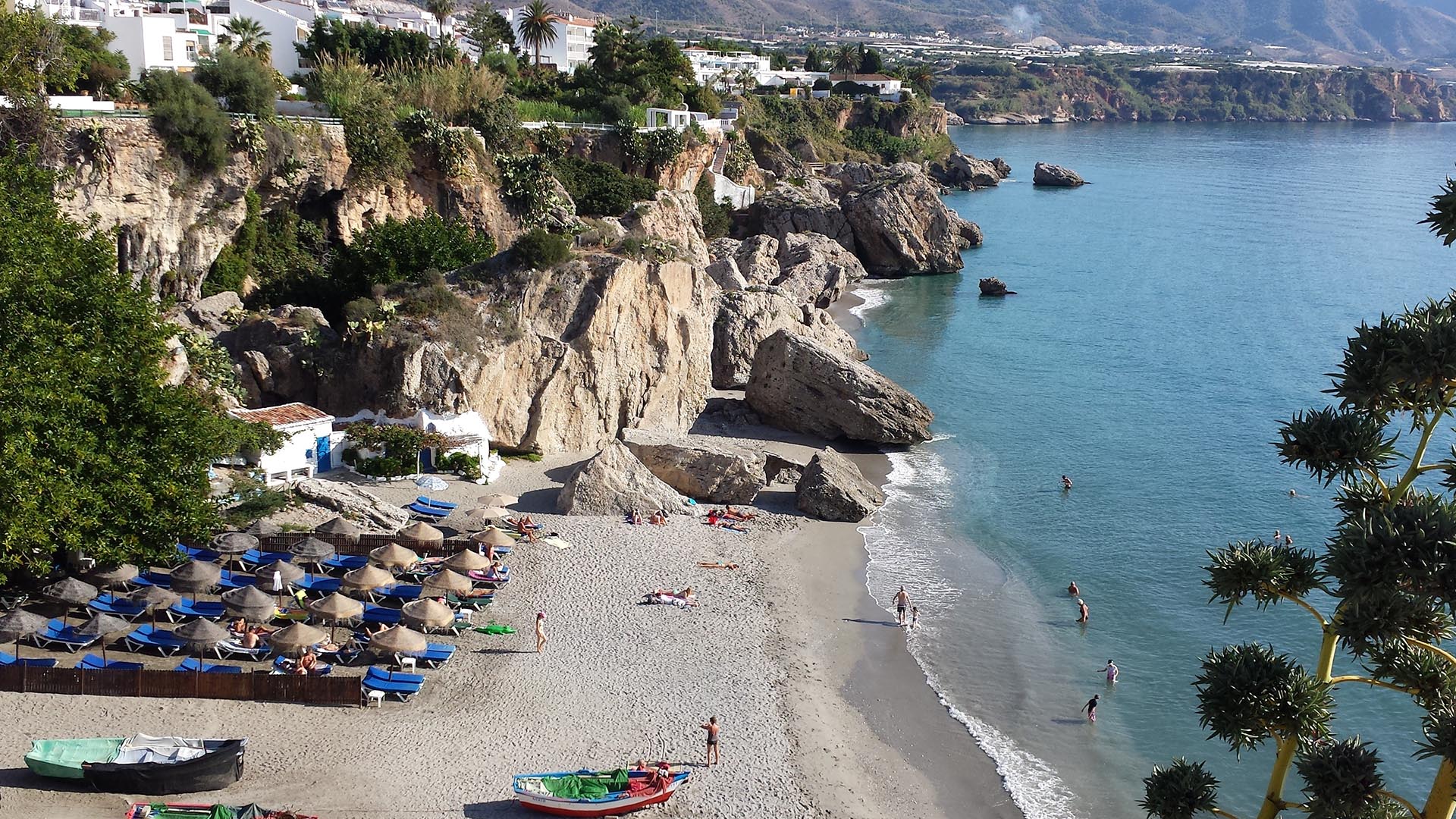
Preparing for a greener and bluer summer 2025
With summer just around the corner, it is this time of the year when many of us get a chance to step back, recharge, and enjoy the outdoors. From ETC-UMA´s side, as we head into the vacation season, we want ...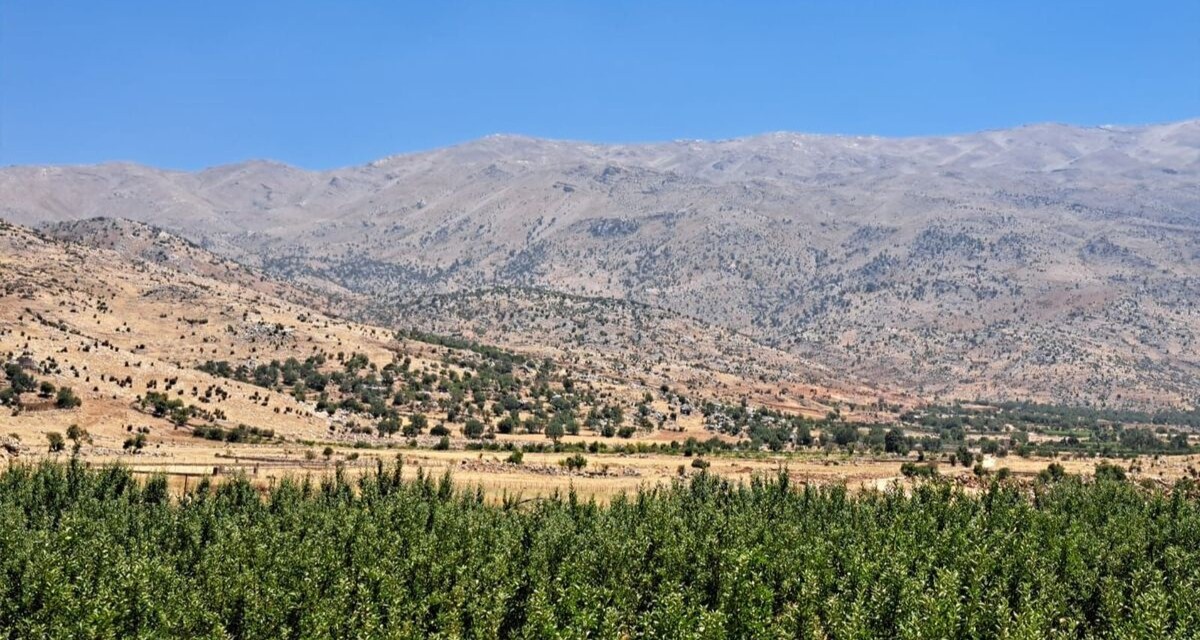
Back in Lebanon with BioConnect: Witnessing nature protection and socioecological resilience in action
As part of ETC-UMA’s role as the external evaluator for the EU-funded BioConnect project, the Centre’s Director, Dania Abdul Malak, carried out a site visit to Lebanon from July 8 to 12 to assess the project’s progress in its third ...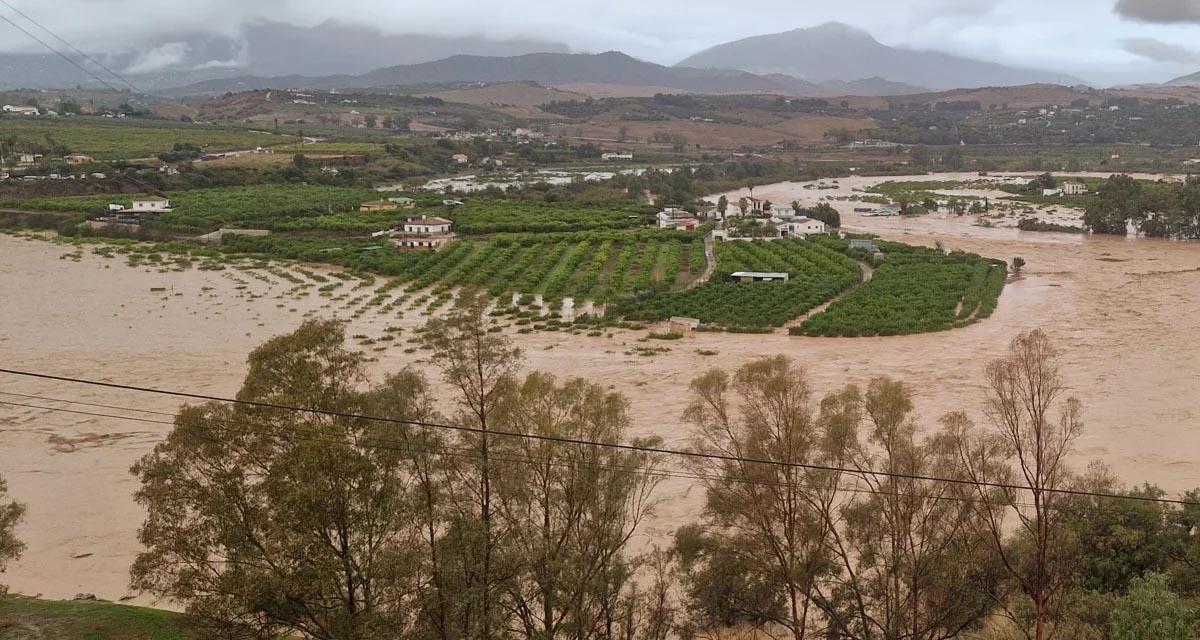
Boosting Climate Resilience: Wetland4Change Project Advances Flood Management Solutions for Mediterranean Coastal Zones
The Mediterranean coastal zone´s combination of multiple severe climate hazards – rising temperatures, water scarcity, sea-level rise, and extreme weather events – makes it a hotspot for highly interconnected climate risks for the ecosystems and societies. Recent catastrophic floods in ...
RESTORE4Cs 1st Policy Brief: How can coastal wetlands help achieve EU climate goals?
The first RESTORE4Cs Policy Brief of RESTORE4Cs, “How can coastal wetlands help achieve EU climate goals?“, highlights the importance of European coastal wetlands for reducing Greenhouse Gas emissions. The key messages of the first RESTORE4Cs Policy Brief include: Coastal wetlands are important natural carbon stores, ...
Mapping the Impact of Blue Tourism in the Mediterranean
The IUCN Centre for Mediterranean Cooperation with the support of ETC-UMA in the framework of the Blue Tourism Initiative, has released a comprehensive report entitled “Mapping the Impact of Blue Tourism in the Mediterranean: Vulnerability Assessment of Coastal and Marine ...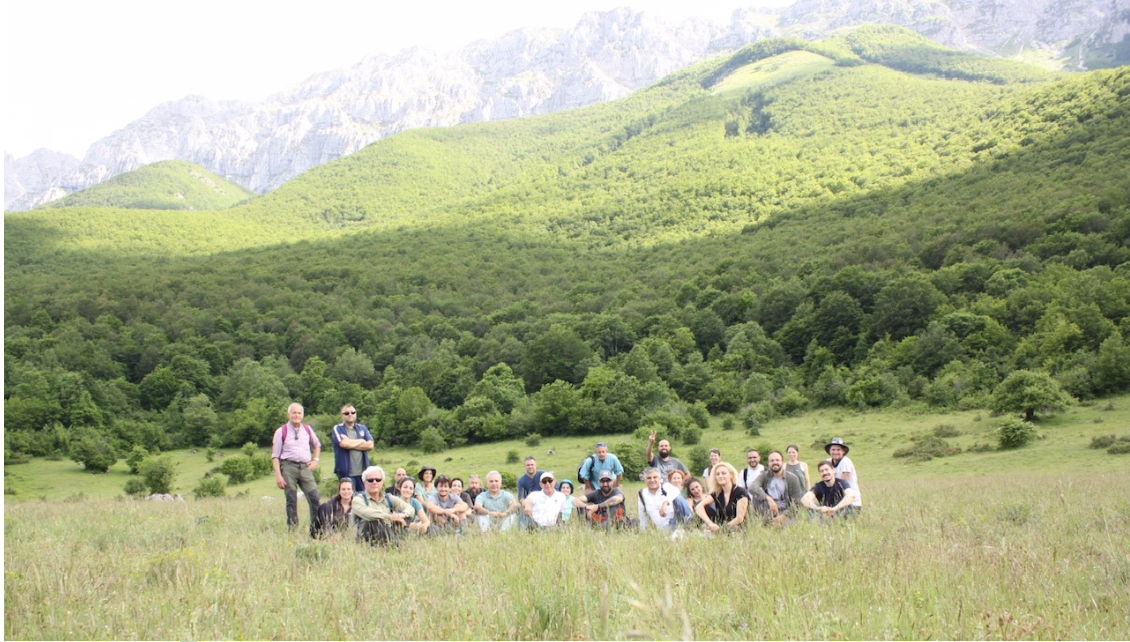
StrategyMedFor Presented at Annual Medforval Meeting 2024
StrategyMedFor was prominently featured at the Annual Medforval Meeting 2024, held from June 5-7 in Fontecchio, Italy. The event brought together 25 practitioners from national parks and natural reserves across 9 Mediterranean countries, providing a valuable platform for StrategyMedFor to ...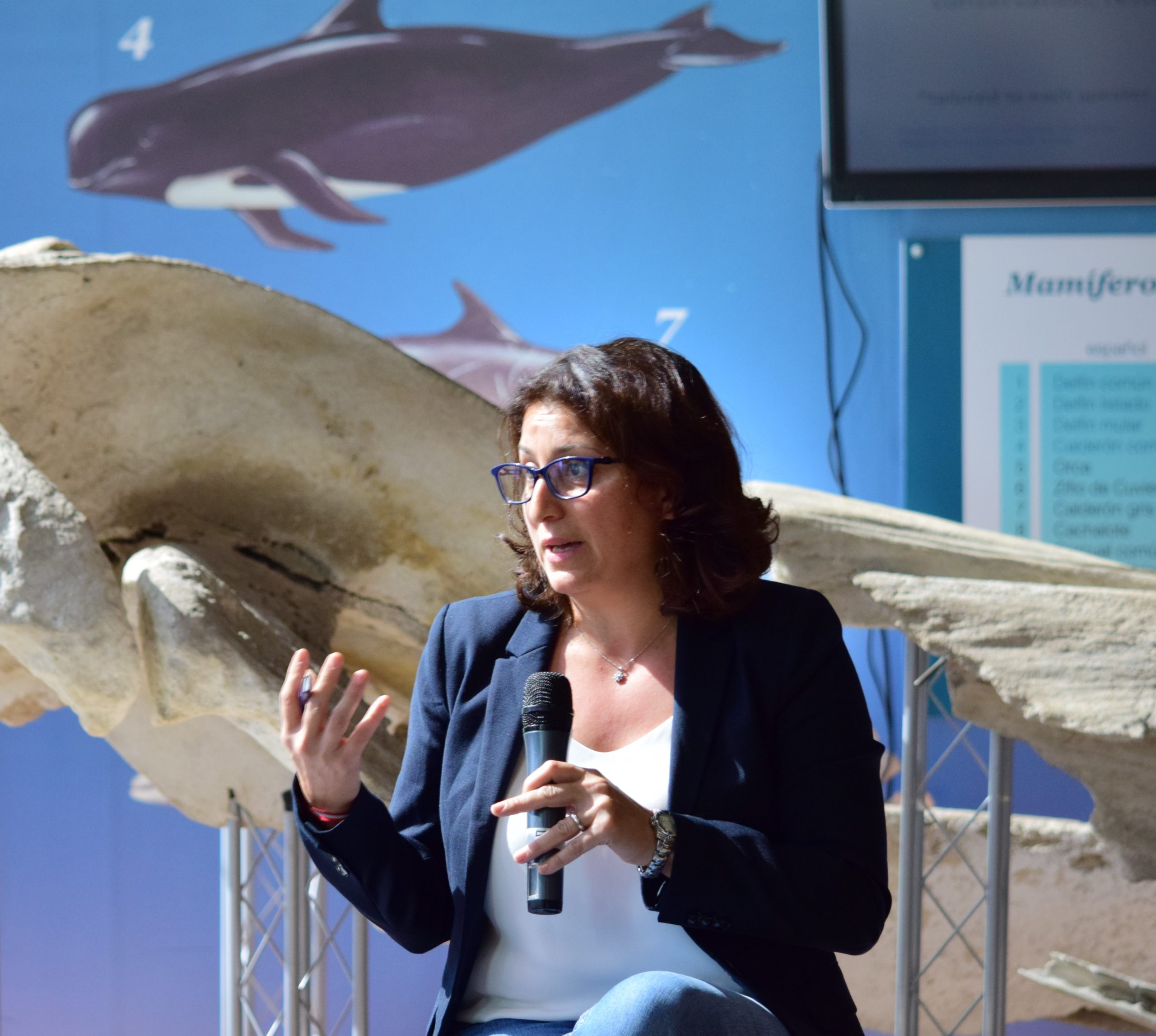
Celebrating leadership in environmental management: an interview with Dania Abdul Malak
From designing integrated ecosystem assessments in Europe and the Mediterranean to transforming outcomes into evidence-based recommendations for regional stakeholders, the European Topic Centre on Spatial Analysis and Synthesis (ETC-UMA) stands as a flagship for territorial cooperation. At the forefront of ...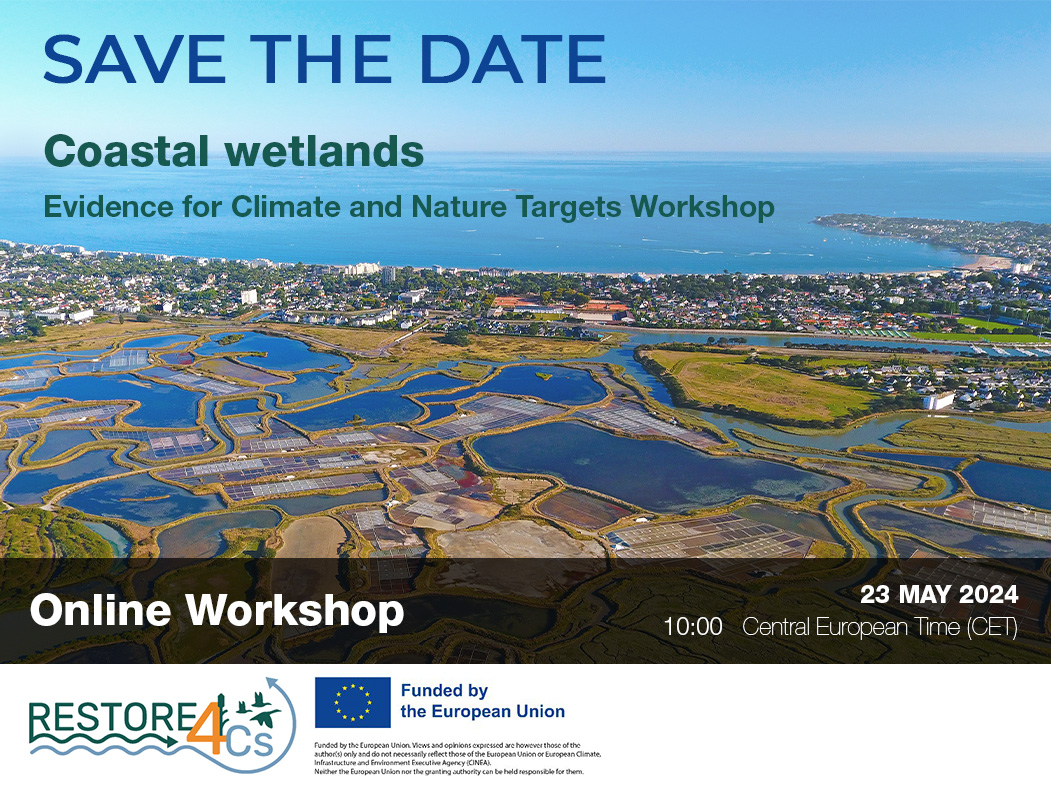
Save the date! Unlocking solutions for coastal conservation in Europe
How can coastal wetlands respond to major European Union objectives such as climate neutrality, biodiversity protection, and pollution reduction? What key role do coastal wetlands play in achieving EU commitments for climate mitigation and biodiversity conservation? The European Topic Centre ...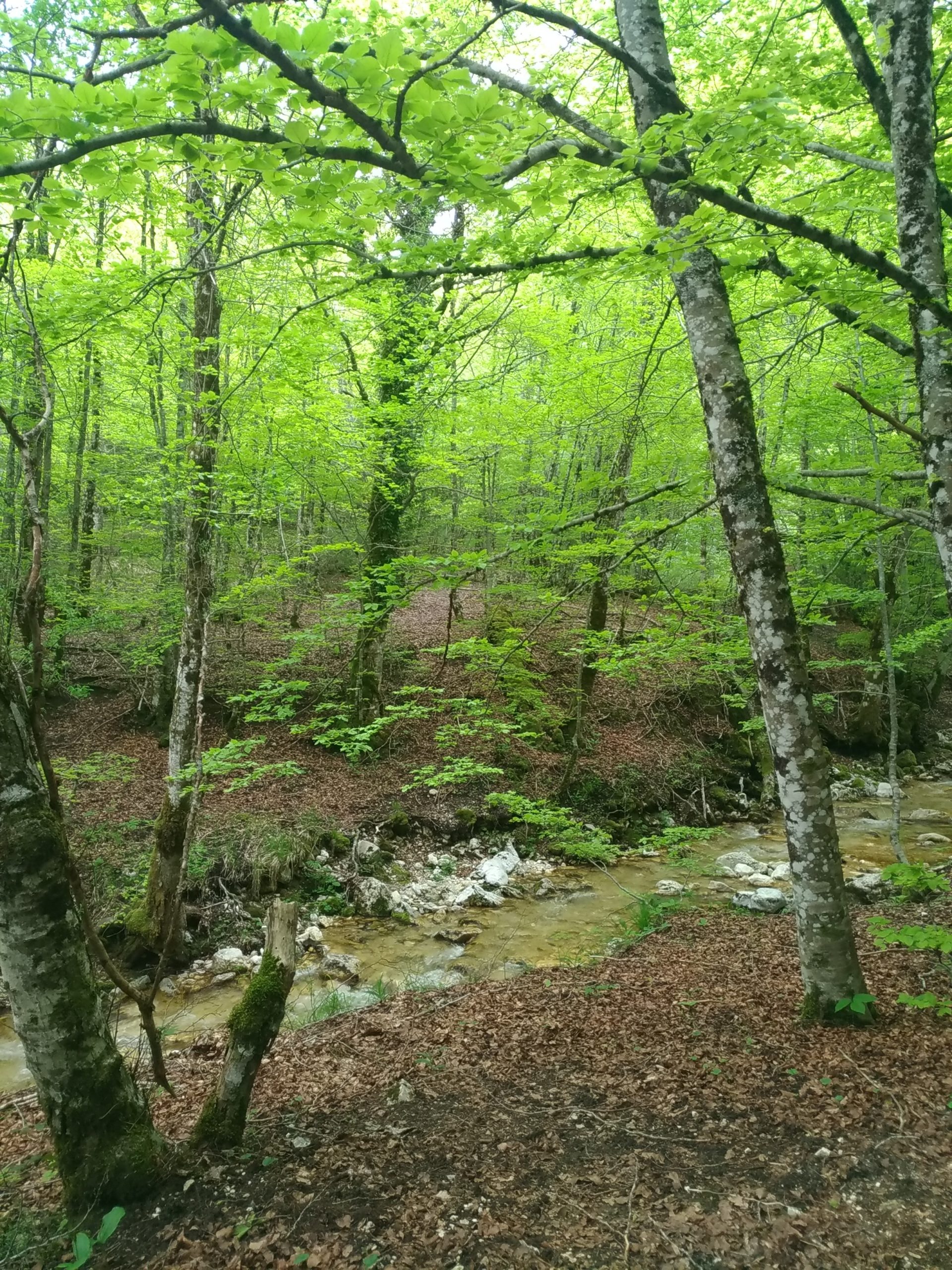
Towards a Strategy for the Sustainable Management of Mediterranean Forests (StrategyMedFor)
The StrategyMedFor project, co-financed by the Interreg Euro-MED programme, was launched at the University of Malaga during a two day meeting that took place on March 18 and 19, 2024. The European Topic Centre on Spatial Analysis and Synthesis (ETC-UMA), ...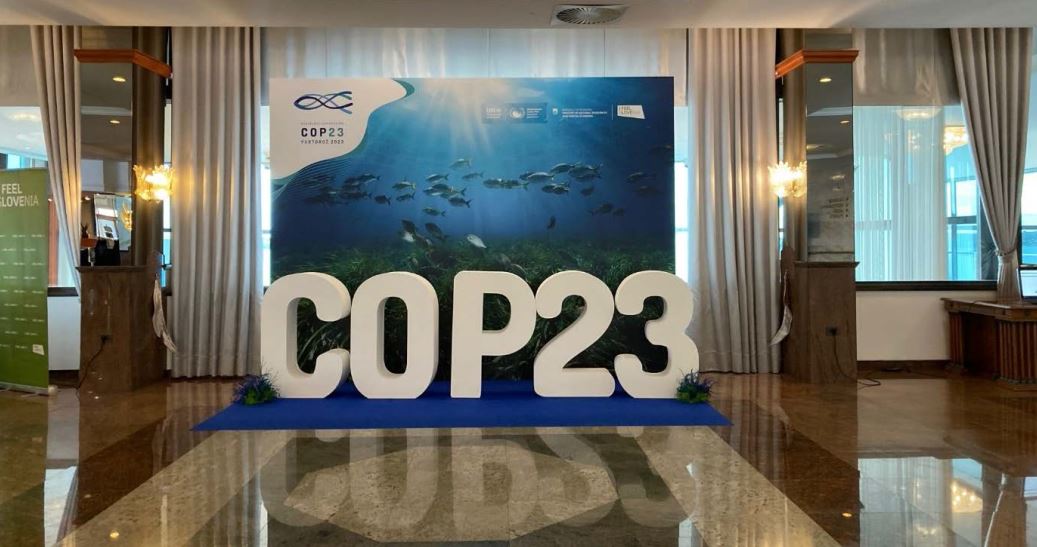
Collaborative science for forests by ETC-UMA showcased in Slovenia during the COP23
As UNEP MAP partner organization, ETC-UMA recently engaged in the organization of a session with Mediterranean institutions under the topic of climate change, entitled: From COASTAL to FOREST ecosystems: Mediterranean Nature-based Solutions to tackle climate change and ensure the Resilience ...
Tools for conserving the Spanish coast
On the initiative of the Instituto Universitario Hábitat Territorio y Digitalización (iHTD) of the University of Malaga, around 70 representatives of Spanish public administrations, researchers, architecture and environmental science players and civil society signed up to the second debate on ...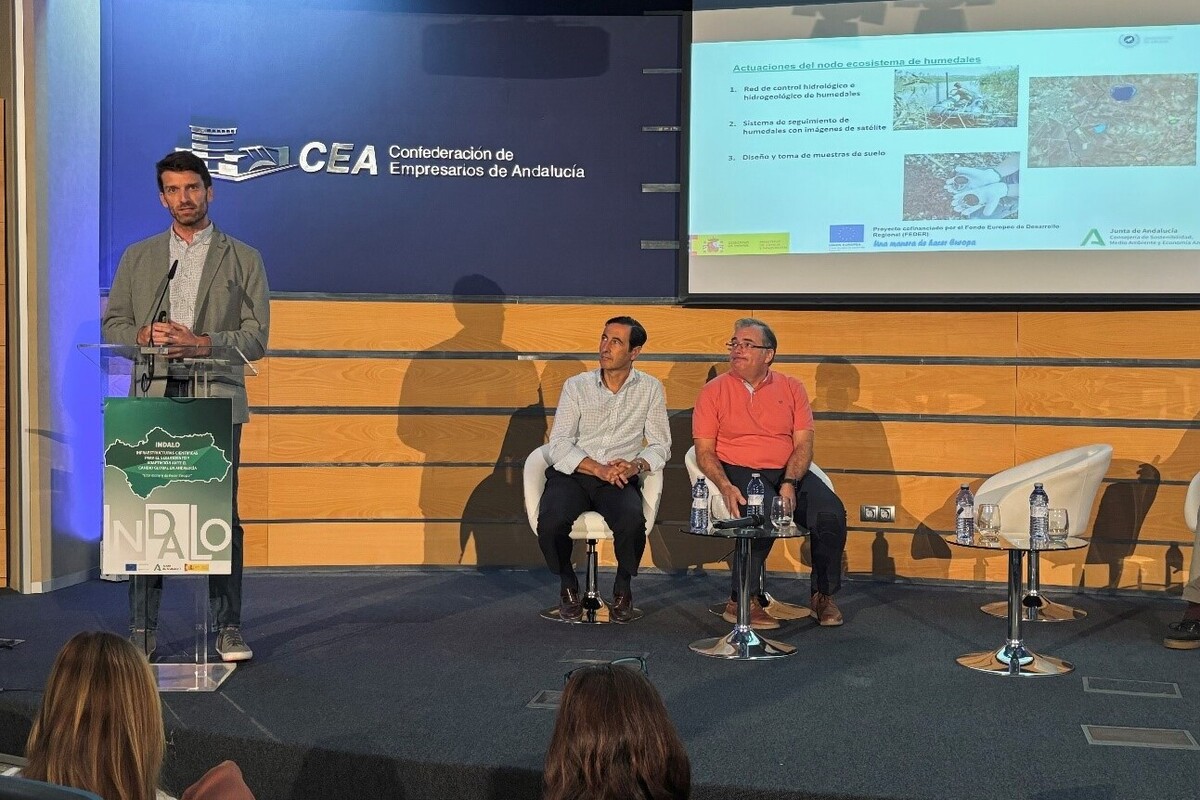
GreenEye System: a cloud-based system to monitor wetlands in Andalusia
Developed in the frame of the LifeWatch INDALO project cofinanced by the European Regional Development Fund (ERDF) for the study of biodiversity and global change in Andalucia, GreenEye System, this new cloud-based monitoring system, provides useful tools for wetlands’ assessment, ...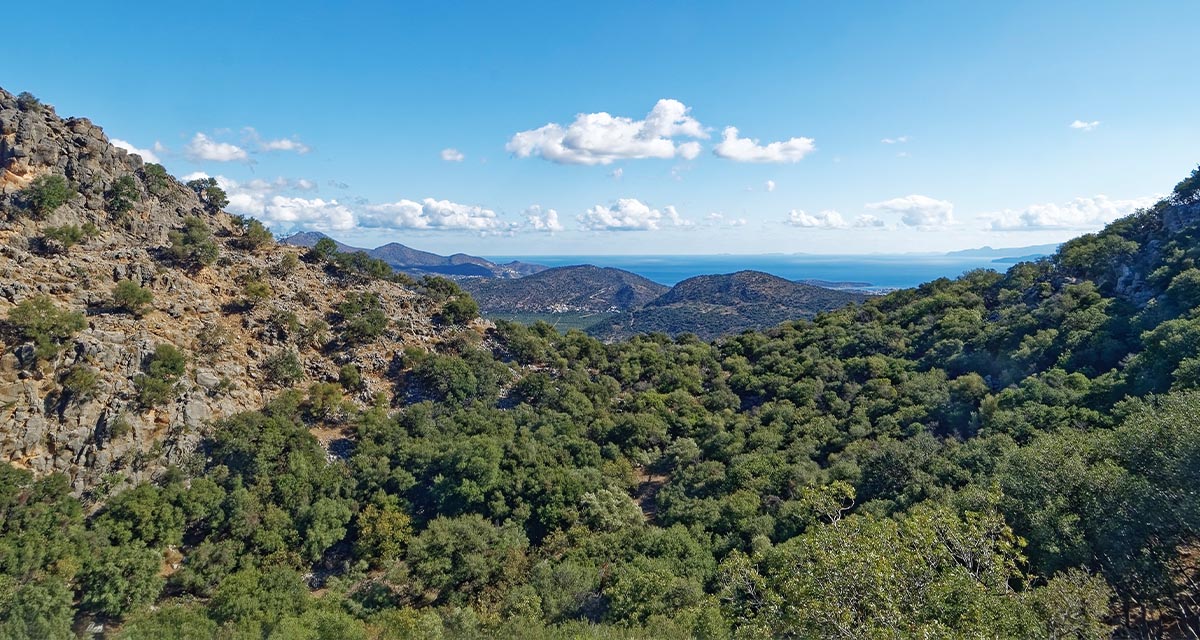
Looking back and forth to Mediterranean Forests
Timely published to enrich the knowledge available to fight fires and climate change challenges after an extremely hot summer, the proceedings of the Seventh Mediterranean Forest Week “Forest and Ecosystem Restoration for the next Mediterranean Generations” held from 21 to ...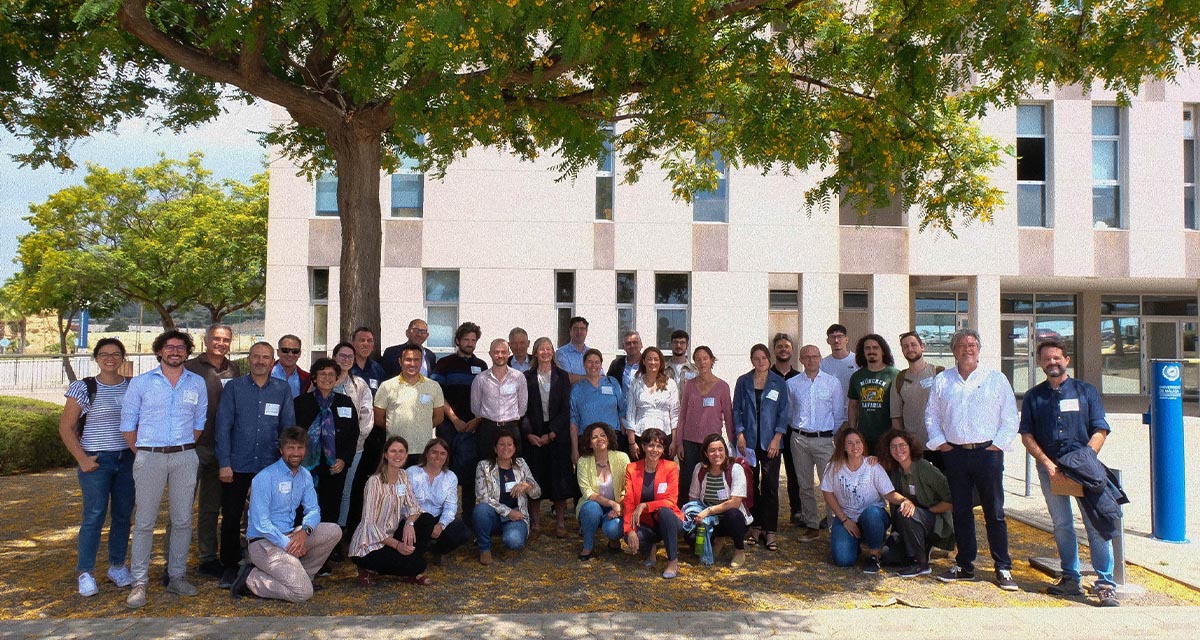
More space for innovative Mediterranean forest data partnerships
The report entitled A knowledge baseline on Mediterranean forests supported by innovation launched in July by ETC-UMA provides a highlight of what Mediterranean countries and institutions are doing to integrate new digital, satellite and Artificial Intelligence technologies into forest monitoring ...

